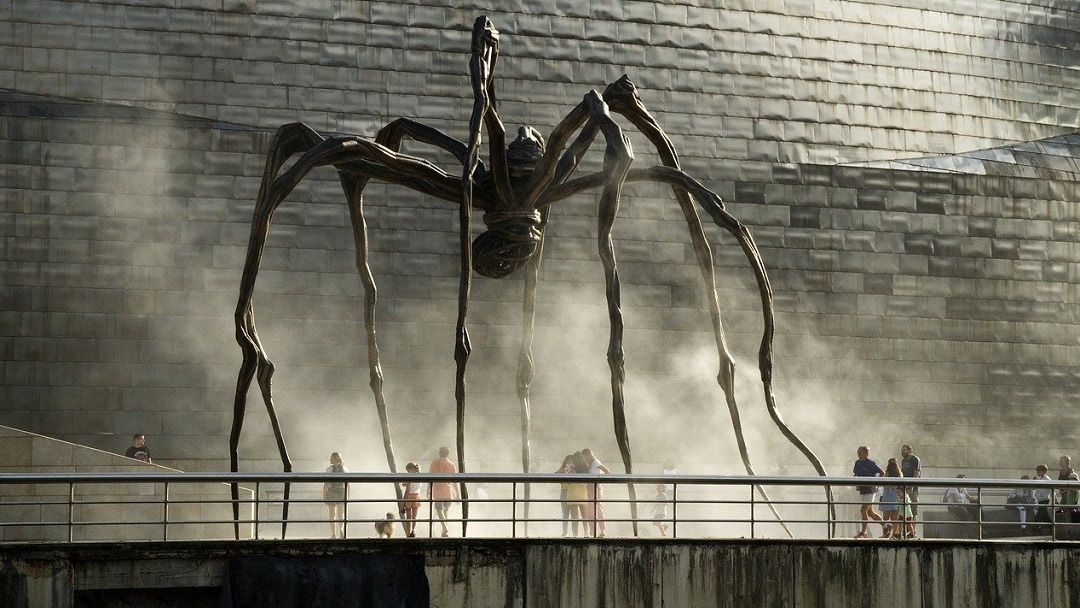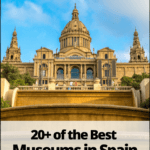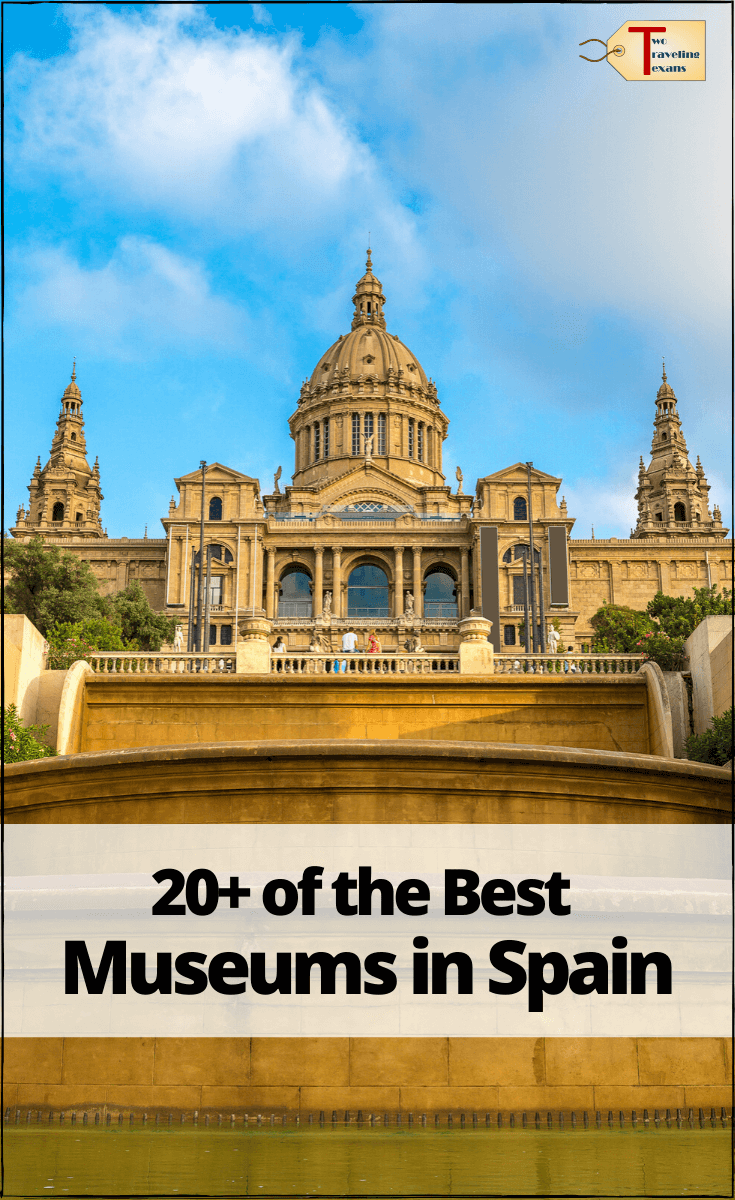If you enjoy visiting museums, you won’t be disappointed in Spain. There are some incredible museums throughout the country covering a wide variety of topics from art to history to culture and more. Make sure you leave some time in your itinerary to see some of the best museums in Spain.
Note: This post contains affiliate links. Please see disclosure for more information.
Contents
The Top Museums in Spain
With so many interesting museums in Spain, it is not easy to choose which ones to visit. With the help of some of my fellow travel bloggers, I have compiled a diverse list. Many of Spain’s top museums are in Madrid and Barcelona, but there are some exhibition centers in other locations that are also worth visiting.
Best Museums in Madrid
If you enjoy museums, then Madrid is probably the best city in Spain to visit, especially when it comes to art. The city has over 40 museums, but there are a few that stand out above the rest. If you plan on visiting multiple museums as part of your sightseeing in Madrid, it might be worthwhile to get one of the city’s attraction passes: the Madrid Card, Go Madrid, or Madrid City Pass.
Be sure to check out our post about things to do in Madrid when you are ready to plan your trip.
Museo Nacional de Prado
Recommended by Deb Pati from The Visa Project
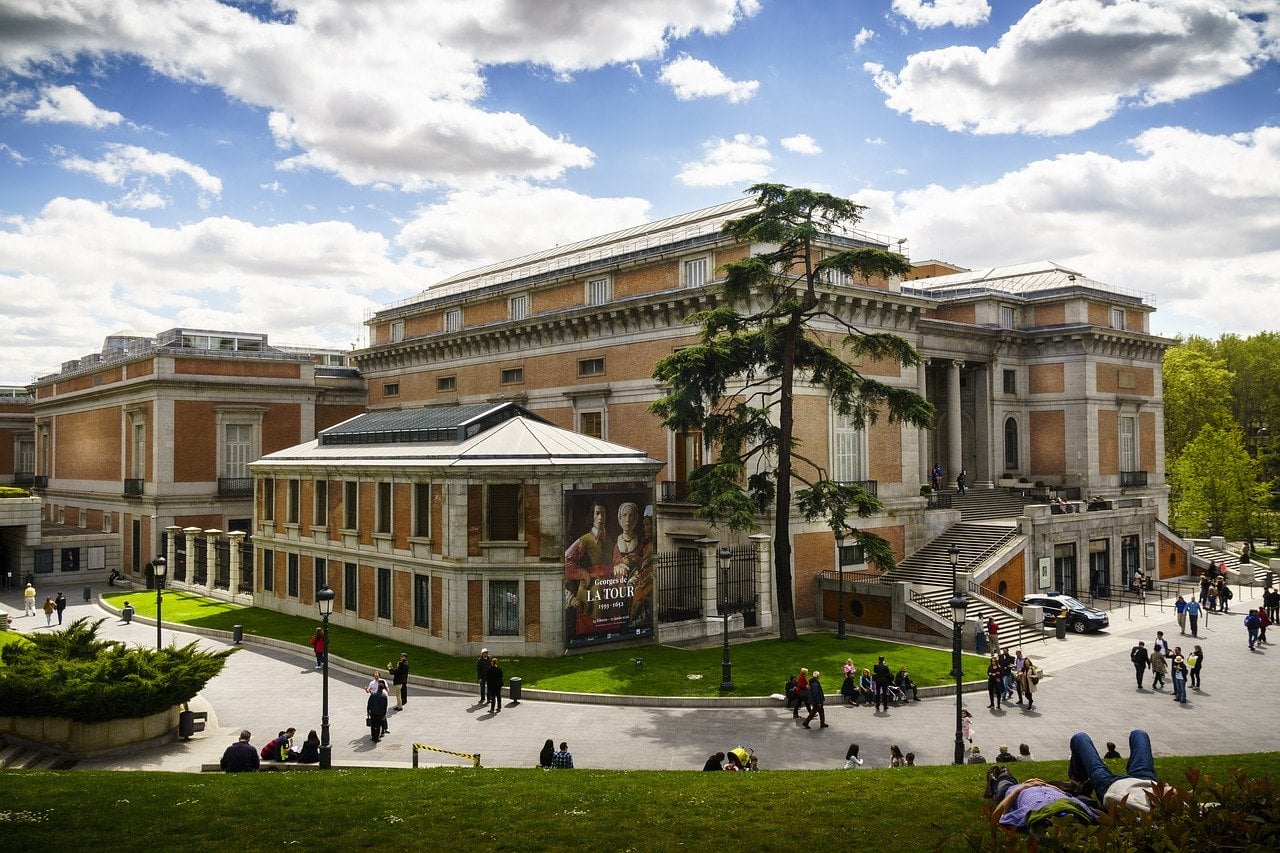
Spain is heaven for those who love museums, and the Museo Nacional del Prado in Madrid is simply unmissable if you have a museum bucket list. Known to be one of the greatest art museums in the world, it is housed in a giant neoclassical building that was completed in 1785.
It has a wealth of the world’s finest collections of European Classical, Medieval, Renaissance, and Baroque pieces, dating from the 12th century to the early 20th century. There are separate sections dedicated to Spanish, Italian, British, German, French, and Dutch artists.
Be it El Greco, Diego Velázquez, Francisco de Zurbarán, or Francisco Goya- they have got them. Las Meninas by Velázquez, and the La Maja Desnuda by Goya are probably some of the best-known art pieces. It is the kind of place where seeing all of the must-see pieces can turn out to be quite an ominous task. You can do an audio self-tour to explore the museum at your own pace.
The admission costs €7.50 and tickets can be bought online. Entry to the museum is free from 6:00 pm – 8:00 pm from Monday to Saturday, and 5:00 –7:00 pm on Sundays and holidays. On November 19 and international Museum Day, the Prado is free for everyone the whole day. The museum is free for journalists, tour guides, the unemployed, handicapped, and everyone under 18, as well as for students with a valid ID between 18 -25.
So even if you are not a museum geek, Prado is worth a visit. Get more information about the Prado museum here.
If you are tight on time, check out this guided tour that includes skip-the-line tickets.
Reina Sofia Museum
Recommended by Mal from Raw Mal Roams
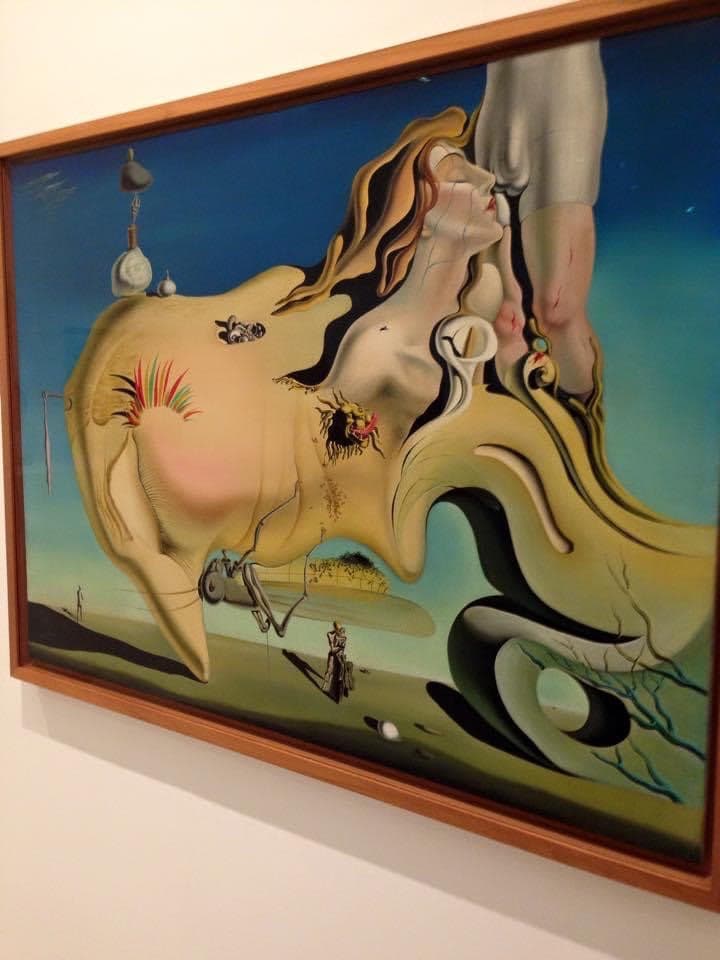
The National Museum of Art Reina Sofia is one of the best museums in Europe showcasing a vast range of masterpieces of world-class artists such a Pablo Picasso and Salvador Dali. It is located in the heart of Madrid in what’s known as the Golden Triangle of Art and focuses on 20th-century art.
Inside the museum, you will find various exhibitions of different artistic movements including Cubism, Surrealism, and Avant-Garde. The most important piece in the museum is “Guernica” by Pablo Picasso. The large painting depicts Guernica’s people suffering during the Spanish Civil War bombing. Other highlights include two famous paintings by surrealist Salvador Dali “The Great Masturbator” and “Figure at the window.”
For free admission to the Reina Sofia Museum, visit on Monday and Wednesday to Saturday from 7 pm-9 pm (individual visitors only). Get more information about the museum here.
Thyssen-Bornemisza Museum
Recommended by Leslie from Backpackers Thailand
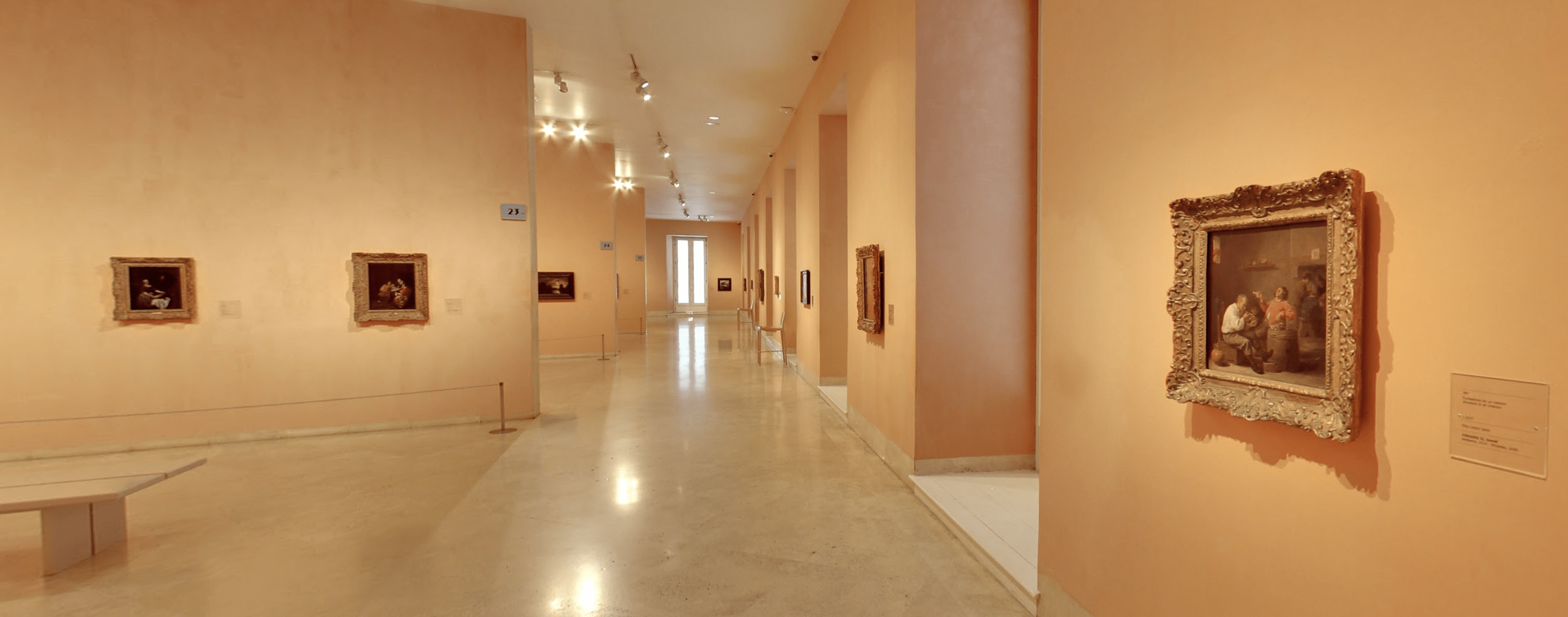
The Thyssen-Bornemisza Museum is one of the largest museums in Madrid. It’s a part of the Golden Triangle of Art, along with the Reina Sofia and Prado. The Thyssen Museum is always at the top of must-see places among backpackers and cultural tourists.
The museum is located in the magnificent Villahermosa Palace, one of the most significant examples of Madrid’s palatial architecture. Established in 1992, the museum is named after the Thyssen family, who sold their private collection making it available for the public.
The Thyssen Museum hosts more than 1,000 artworks, in styles from different periods: Renaissance, Baroque, Rococo, Impressionism, and Pop Art. A vast collection includes masterpieces by Duccio di Buoninsegna, Jan Van Eyck, Ghirlandaio, Carpaccio, Dürer, Rubens, Caravaggio, Canaletto, Monet, Degas, Gauguin, Van Gogh, Picasso, Chagall, Hopper and many more.
An average visit to the Thyssen will take around three to four hours. The permanent collection is open 7 days a week: Monday from 12:00 pm to 4:00 pm (when admission is free) and Tuesday to Sunday from 10:00 am to 7:00 pm.
Get more information about the Thyssen-Bornemisza Museum here.
Best Museums in Barcelona
While Barcelona may not have as many museums as Madrid, there are still plenty interesting options. It’s the best place to learn more about Catalan history and culture. The museums cover a wide range of topics, so everyone can find at least one that they are interested in. It’s one of the reasons Barcelona is worth visiting.
If your main focus in Barcelona is visiting museums, check out the Articket to save money. Alternatively, you could also use the Go City Barcelona Pass, Barcelona City Pass, Turbo Pass Barcelona, Hola Barcelona Card, or the Barcelona Card.
Picasso Museum
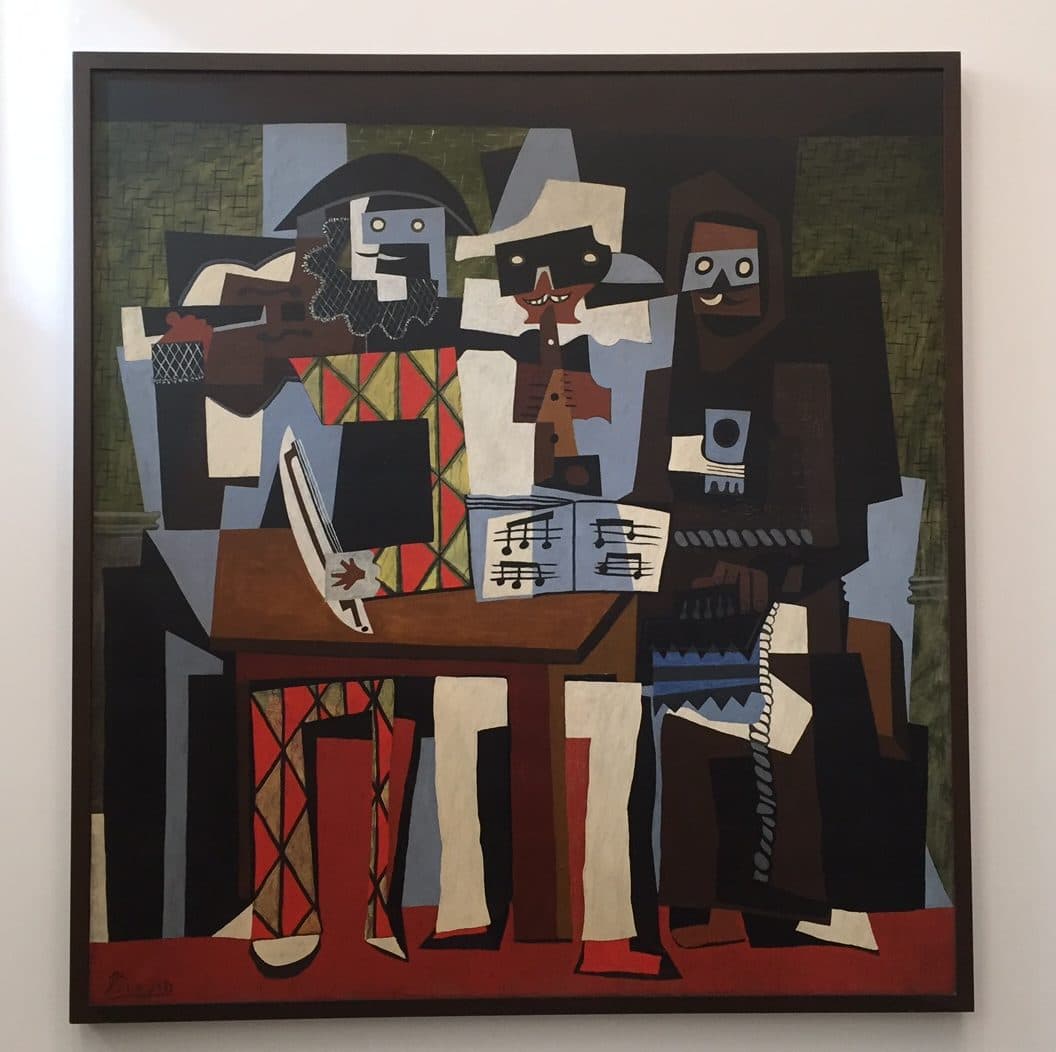
Recommended by Anisa
Barcelona is one of several cities around the world to have a museum dedicated to Pablo Picasso. While he may be best known for his cubist work, this museum is dedicated to the artist’s early years since he lived in the city from age 14 to 23.
The artwork is arranged in chronological order so it is intriguing to see the progression starting from paintings created when Picasso was only 14 years old. The museum also has artwork from his Blue and Rose periods and several of the interpretations that Picasso did of Diego Velazquez’s masterpiece Las Meninas.
The Picasso Museum is located in the El Born area of Barcelona. If you are taking the Metro the closest stops are Jaume I or Arc de Triomf. Allow 2-3 hours to see the exhibits. They do not allow photography inside the museum.
It’s best to get a timed-entry ticket in advance of your visit to avoid the line. The museum is open from 11:00 am until 9:00 pm Tuesday through Sunday and closed on Mondays. If you time your visit right, you can enjoy the Picasso Museum Free Sunday which happens on the first Sunday of the month. It is also free entry on Thursdays from 5 pm to 9 pm.
Get more information about the Picasso Museum here.
Museu Nacional d’Art de Catalunya
Recommended by Tom from Travel Past 50
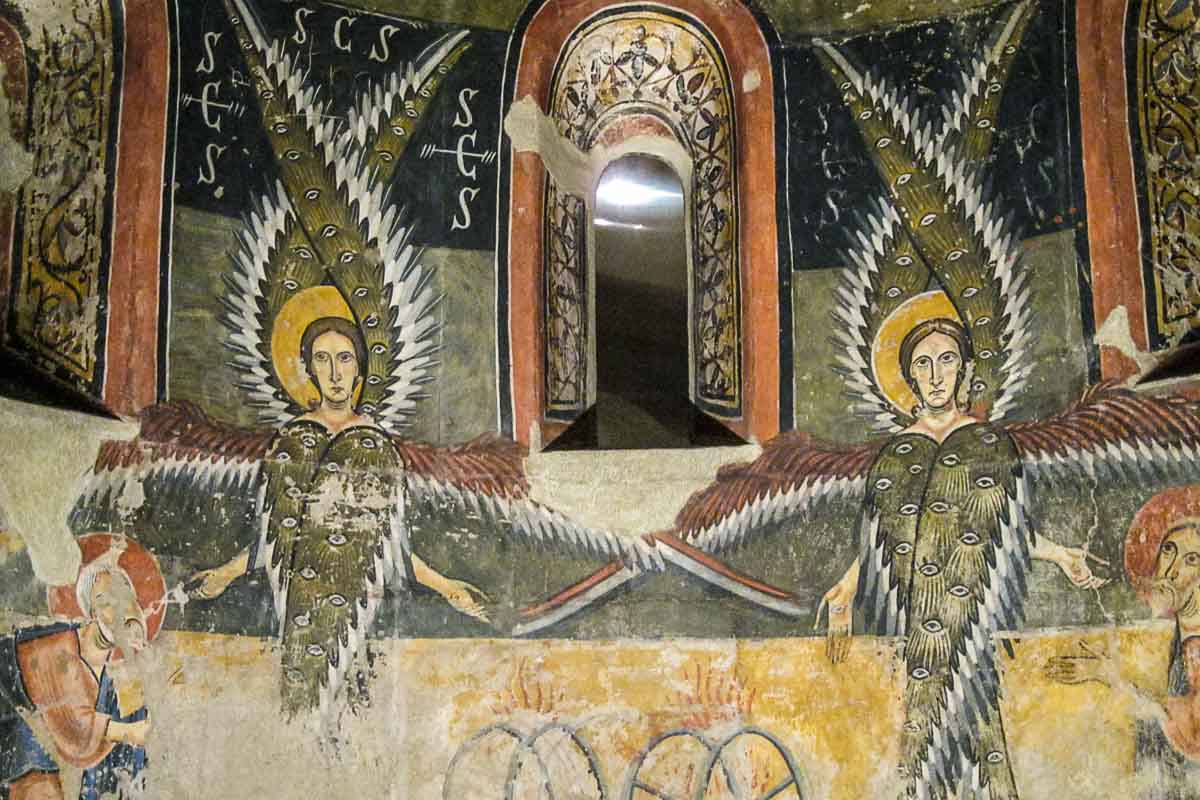
The Museum of Catalan Art in Barcelona features rotating exhibits of all facets of Catalan art, but its treasure is the extensive collection of religious artifacts, sculptures, and frescoes that have been removed from crumbling 10th-13th Century Romanesque churches in the Catalan Pyrenees and brought to the museum for display and preservation. It’s truly remarkable stuff that astonishes by how truly bizarre it can be. From attenuated carved wooden figures of saints to colorful angels whose wings are made of eyes, you can see where Salvador Dalí must have got at least part of his inspiration.
The Museum also features an extensive collection of Catalan art and design from the late 19th and early 20th centuries, including the modernism of notable Catalan architects Antoni Gaudí and Lluís Domènech i Montaner.
The museum is housed in the Palau Nacional, a huge, Italian-style building on Montjuic dating to 1929. The Palau Nacional, which has housed the Museu d’Art de Catalunya since 1934, was declared a national museum in 1990. General Admission is 12 euros, but you can visit the museum for free after 3 pm on Saturdays, the first Sunday of each month, May 18th (International Day of Museums) and September 11th (the national day of Catalonia).
Get more information about the Museu Nacional d’Art de Catalunya here.
Museu d’Història de Catalunya
By Mayuri from ToSomePlaceNew
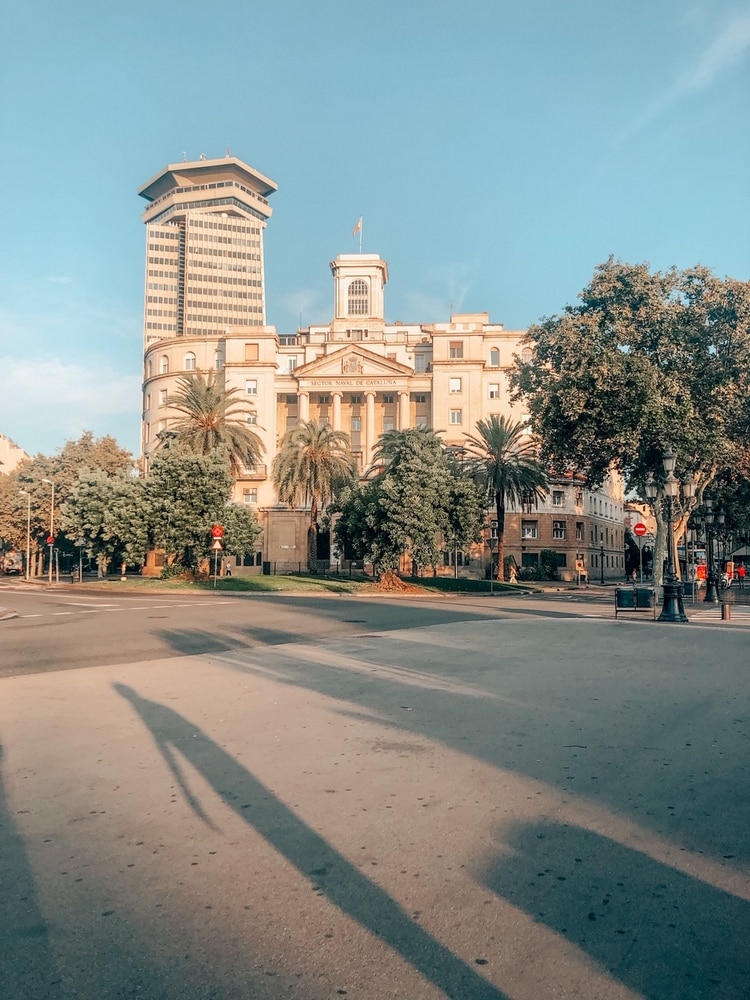
The Museu d’Història de Catalunya (aka Museum of the History of Catalonia) is a history museum. If you wish to learn about Catalan culture, history, and its evolution over the years – this is a must for your itinerary in Barcelona.
The museum is housed inside a red brick building, which was a warehouse once upon a time. When you pass by the area, it doesn’t scream museum, unlike many of the stunning buildings in Barcelona. However, the stories and presentations inside the museum, including the amazing rooftop cafe is worthy of a visit.
You can find exhibits from prehistoric to the Iberian ruler, followed by the remnants of the Romans. This museum and the exhibition sort of summarizes how Barcelona has evolved during different rulers to the present-day nationalist feelings (of Catalunya).
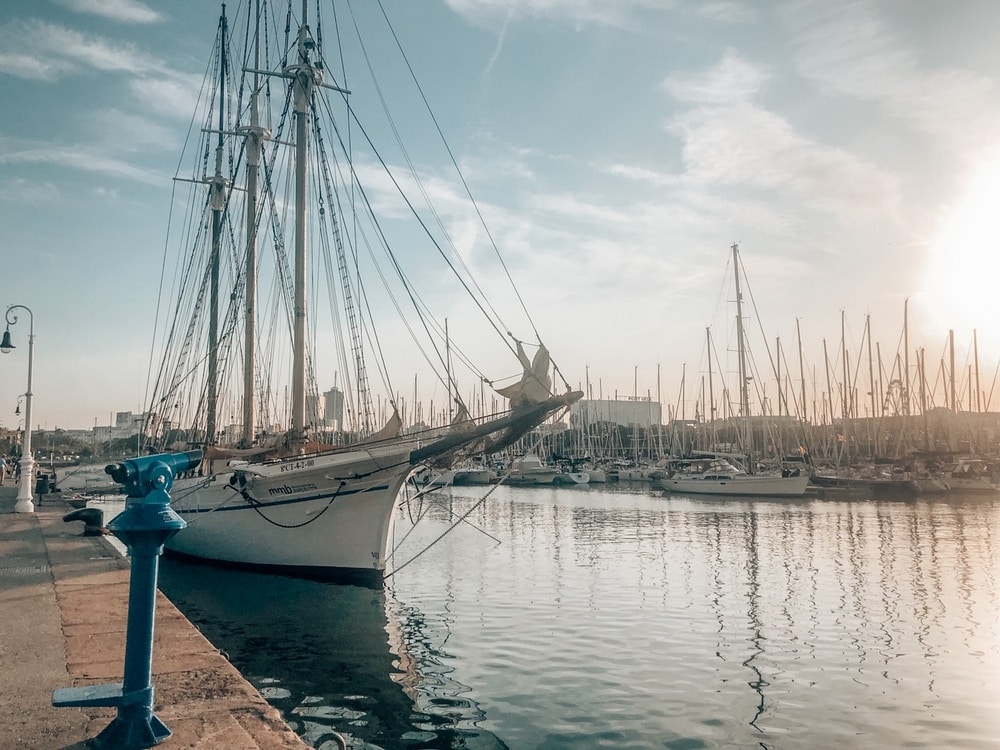
The Museum of History of Catalonia is located by Port Vell, a popular area in Barcelona with the riverfront and the Christopher Colon monument, located in the same area. You can also add this as part of your walking tour from the famous La Rambla pedestrian lane.
The general rate to see the permanent and temporary exhibits is 8 euros, but there are reduced rates for seniors and students. Children under 16 are free. The museum also has free admission on the first Sunday of the month from 10:00 am to 2:30 pm, along with a few other days throughout the year.
Get more information about the Museu d’Història de Catalunya here.
Maritime Museum (Museu Marítim)
Recommended by Vaibhav Mehta from The Wandering Vegetable
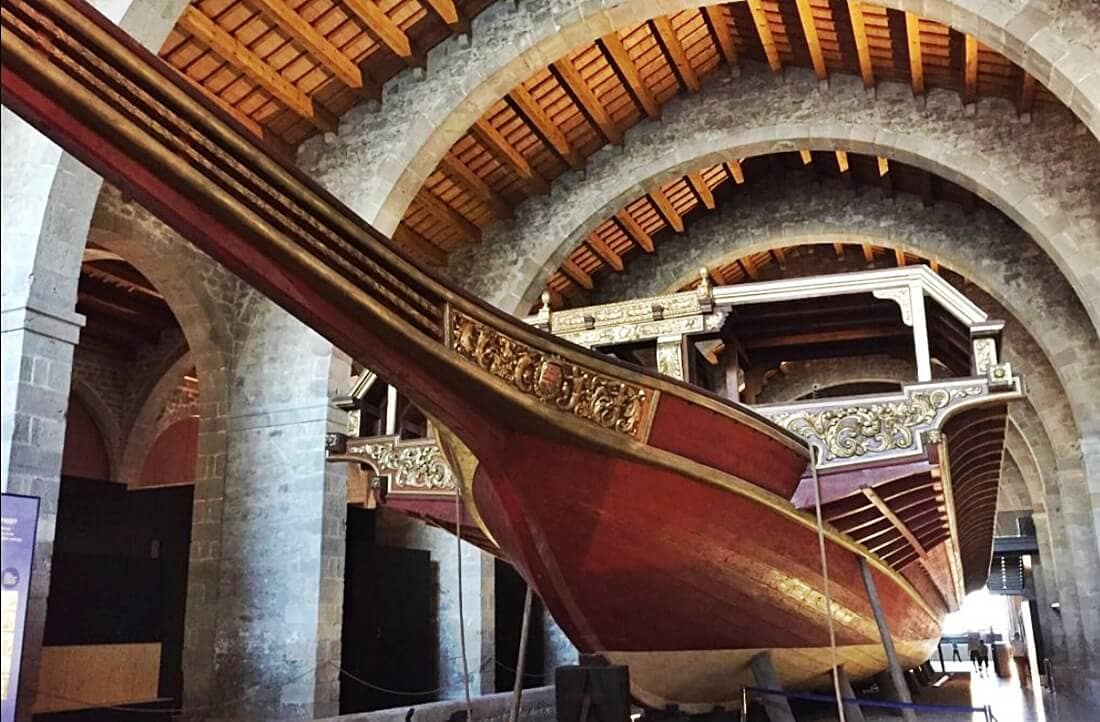
Located across the road from the Columbus monument and inside the Barcelona Royal Shipyard building (Drassanes Reials de Barcelona), the Maritime Museum is dedicated to the history of shipbuilding between the 13th and 18th centuries. The building, with classic Gothic architecture, used to be the naval and shipbuilding center for several hundred years.
It was established in 1936 and is a symbol of Barcelona’s naval supremacy during the famous Mediterranean expansion. Inside the museum, you’ll see several small boats, replica models of ships, and artifacts on display. The interactive nature of the exhibits makes it unique and special. You get goosebumps when you see the large scale historic ships that were built in the dockyard.
A flawless audio guide that synchronizes with your walking tour makes it feel as if you’re walking through the chapters of sailing history. There are also 4-5 movie theaters running film footage about the maritime history of Catalonia.
The main attraction of the museum is the life-size replica of the Royal Galley, a warship propelled by 200 slaves and operated by the ‘Holy League’ at the Battle of Lepanto in which the Turkish Armada was defeated.
You can find a restaurant and cafe inside the museum and a lush garden with an attractive fountain outside. You can also buy nautical souvenirs from the gift shops, ranging between 30 Euros to 220 Euros.
It’ll easily take you 2-3 hours to explore the museum. The entry fee for the museum is 10 Euros. However, you can visit the museum for free on Sundays between 3 pm – 7 pm. Also, children under 7 can enter for free.
Get more information about the Maritime Museum here.
Barcelona City Museum
Contributed by Wendy Werneth of The Nomadic Vegan
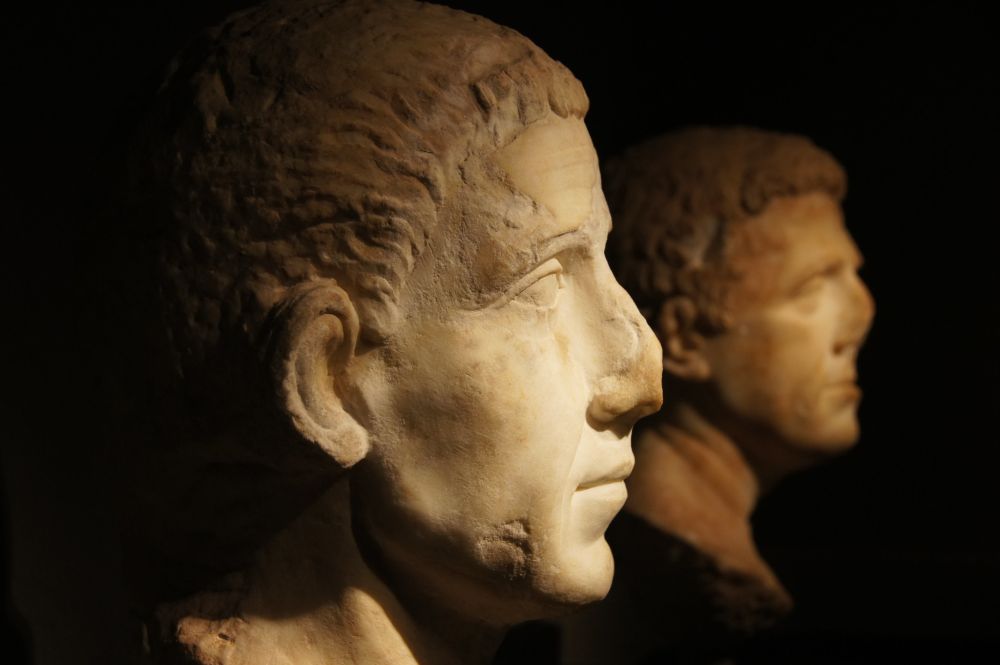
While most visitors to Barcelona come for the 19th and early 20th-century architecture of Antoni Gaudí, the city’s history dates back much further than that. All the way back to the ancient Carthaginians, followed by the Romans. To learn more about Barcelona’s ancient Roman history, the best place to start is the Barcelona City Museum. Although to be more accurate, it’s not just a museum but also an archeological site.
The museum is housed inside a palace called the Casa Padellàs, which now sits in the Gothic Quarter on Plaça del Rei. Originally, though, the palace was built in a different location on Mercaders Street. It was painstakingly moved stone by stone and reconstructed, in order to make way for a new road to be built. But under the new foundations in the Gothic Quarter, workers came across remains of ancient Roman buildings.
These ancient remains can now be viewed in-situ, alongside a number of other Roman artifacts uncovered in various places around Barcelona. The marble busts are particularly striking and still seem very lifelike, even with their noses partially broken.
The museum is open Monday to Friday from 10 am to 2 pm, and also from Monday to Thursday from 4 pm to 7 pm. If you come in the afternoon, you can head straight from here to Cat Bar, a fun nightlife spot just on the other side of Via Laietana that serves some of the best vegan burgers in Barcelona.
Get more information about the Barcelona City Museum here.
Museum of Sagrada Familia
Recommended by Tara from Tara Travels
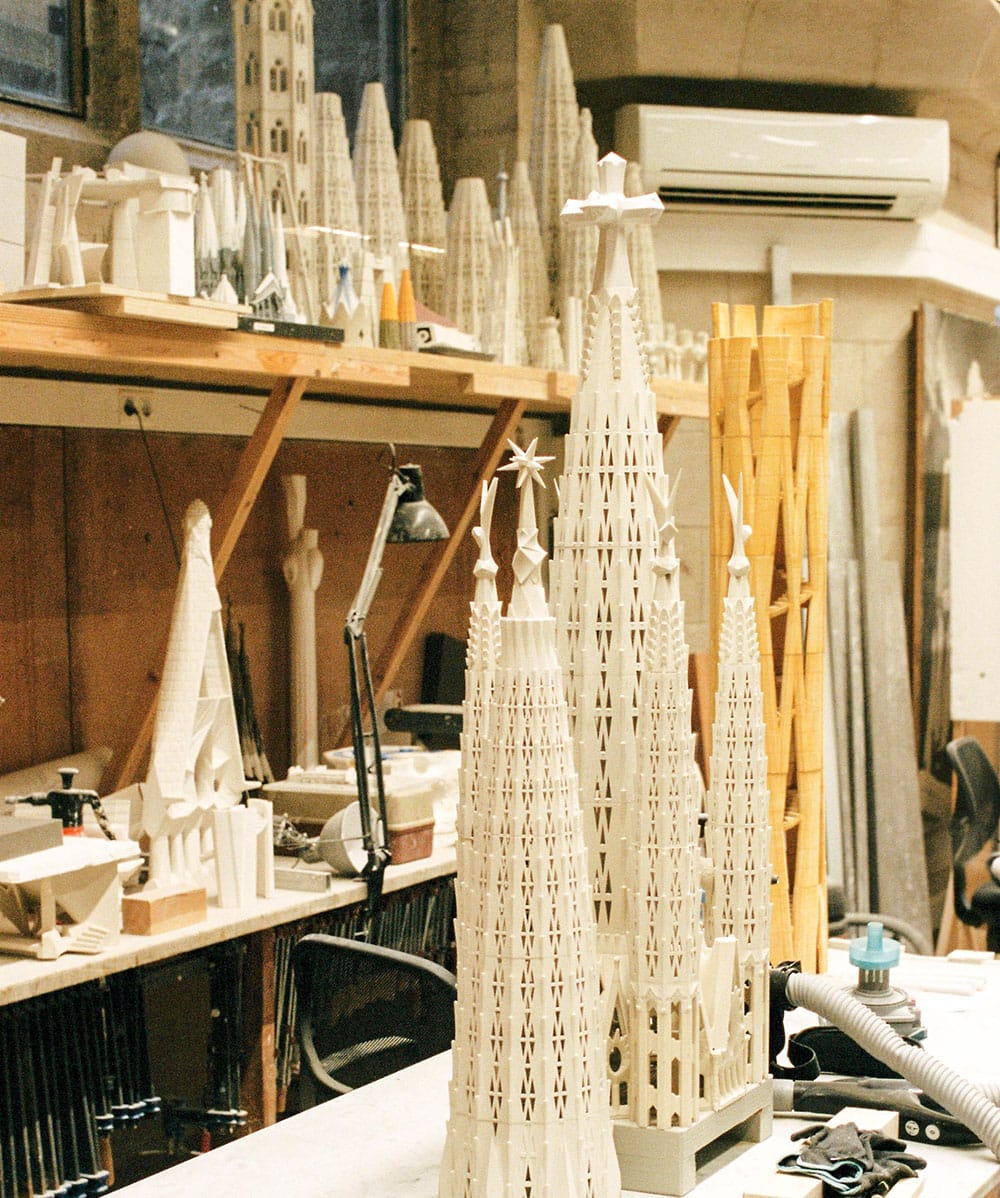
Everybody knows the Sagrada Familia church in Barcelona, but not many people stop to visit the school that was also built by Gaudi right next door. It houses all the architectural models and studies he completed in order to design the enormous church, which is a fascinating place for any architecture enthusiast.
Gaudi designed the building as a school for the children of the workers building the church in 1909. It unfortunately suffered a few fires and was eventually turned into the museum dedicated to the Gaudi’s architectural studies of the church. It is a small structure, but once seeing it you will notice the work of Gaudi with its undulating roof and natural forms.
Gaudi used gravity to build scale models of various parts of the building upside down. By hanging different weighted strings, he tied them together and the resulting curved shapes are the towers and arches that we see today. He is the first and possibly only architect to study form in this manner as he did not have computer software at the time. To see the upside down string models of the enormous church inside another Gaudi building is truly inspiring.
Recinto Modernista de Sant Pau
Recommended by Jurga from Full Suitcase
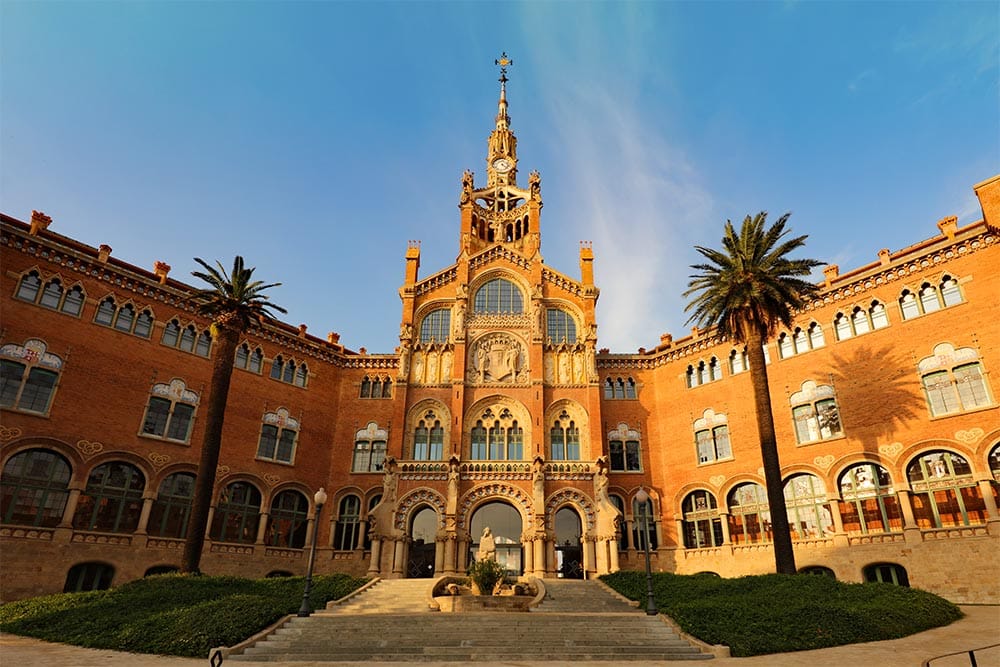
Hospital de la Santa Creu i Sant Pau is one of the most unique museums in Barcelona. Located just a 10-minute walk from La Sagrada Familia, Sant Pau is a real hidden gem, overlooked by most tourists. To us, it was one of the highlights of our weekend in Barcelona; one of the very few places in the city that we had almost completely to ourselves.
The museum is set inside the impressive art-nouveau style buildings of an old hospital that had been functional until 2009. The site was originally designed by architect Lluís Domènech i Montaner, who is also the man behind the stunning concert hall Palau de la Música Catalana. Both of these architectural marvels are now listed as UNESCO World Heritage Sites.
The Sant Pau Hospital site contains 26 buildings, each more impressive than the other. Some of them have been restored and can be visited inside, while the others can only be admired from the beautiful gardens on the outside.
A visit here is like a trip back in time, to the hospital from the beginning of the 20th century. You can see old hospital rooms and wander through the underground tunnels that connect all the buildings. On the walls of the tunnels, you can see projections of doctors, nurses, and patients. It’s as if you are between them. The interior of the main building is not to be missed too – it’s more like a palace than a hospital.
The museum is open daily, hours vary by season. Free entrance on the first Sunday of the month, 23rd April, and 24th September.
Get more information about Hospital de la Santa Creu i Sant Pau here. As of June 4, 2021, you can get discounted tickets here.
Chocolate Museum
Recommended by Sally from Loving Life in Spain
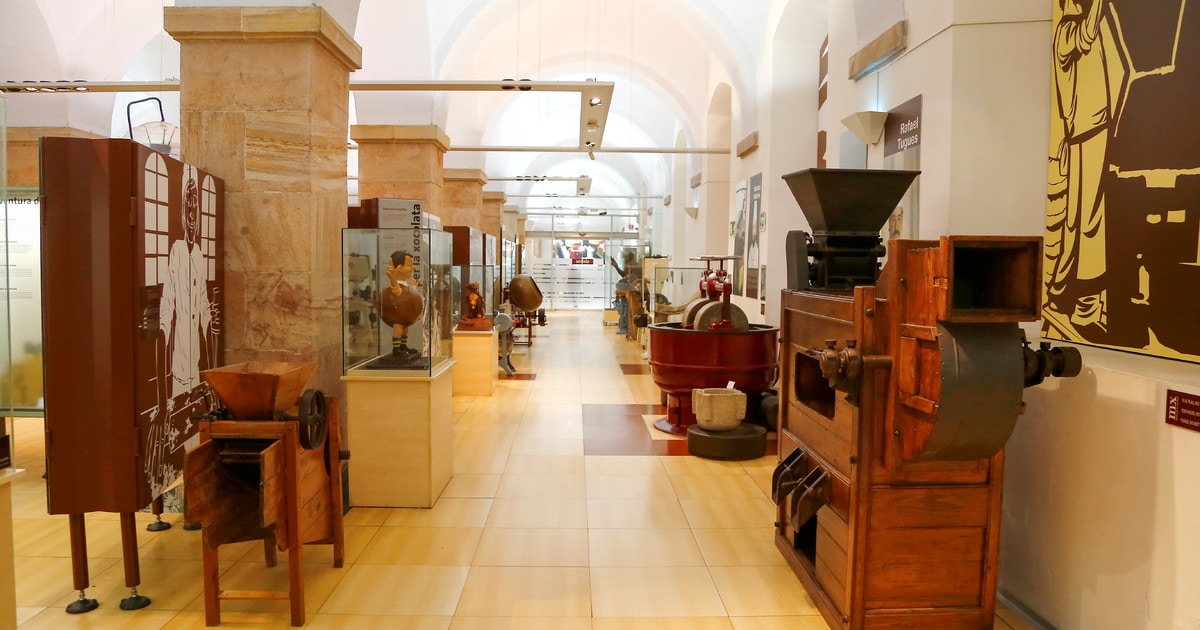
If you are like me and you love chocolate, then the Chocolate Museum in Barcelona is a place you will not want to miss. Museu de la Xocolata, or as they say in Spanish, Museo del Chocolate, opened in 2000 in the El Born district in Barcelona.
During your tour of the private museum, you will see items that were used to make and serve chocolate, as well as learn about the history of chocolate dating back to the 15th century. Learn about its origins from the Mayan-Aztec era, its arrival in Spain, and through Europe, to its industrialization. You will also view several impressive illustrations from various stories and famous buildings and landmarks in Barcelona, all made of chocolate.
If listening to the stories about chocolate and viewing all the chocolate displays will make you want to eat chocolate, do not worry, you will also get to sample the delicious chocolate they make. When the tour is over, you can shop at the Museum Shop or relax in the cafeteria with some more chocolate.
The museum has activities and workshops for all ages. Kids will love making lollipops and painting with chocolate. Adults will enjoy paring wines and cava with chocolate, paring brandies with chocolate, and pairing beer with chocolate.
Get more information on tours, workshops, and activities at the Chocolate Museum here.
Fundació Joan Miró
Recommended by Elisa from World in Paris
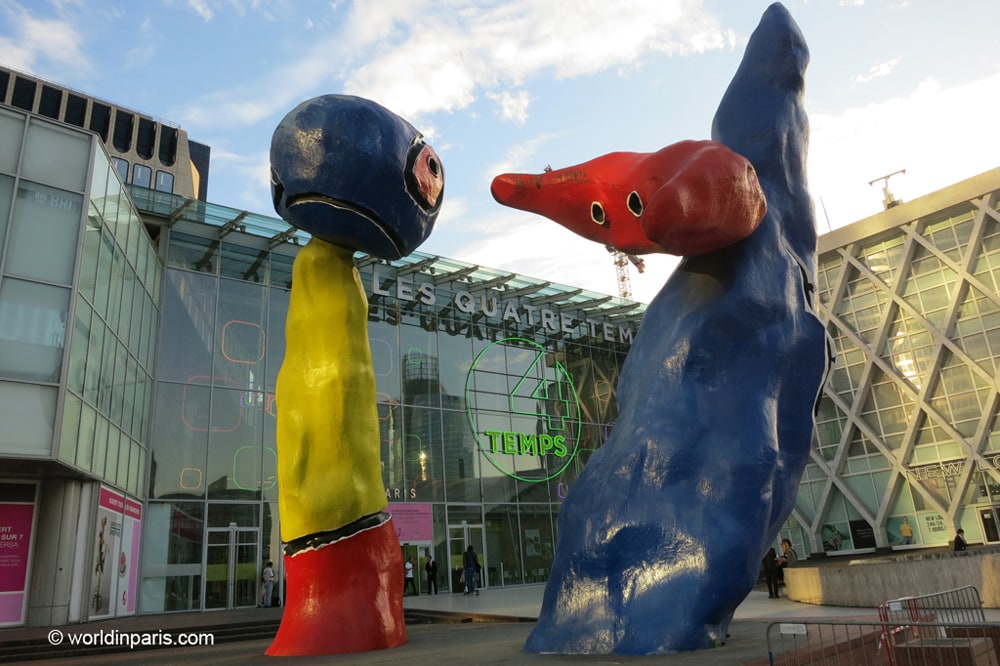
The Fundació Joan Miró in Barcelona is the best place to learn about the Catalan sculptor, painter, and ceramicist Joan Miró (1893-1983) and a great museum to visit for modern art lovers in general. The museum is located in Montjuich, not far from the famous Magical Fountains, and it is very easy to reach by metro.
After his training in Barcelona, Joan Miró moved to Paris in 1920, where he joined different artistic groups such as Surrealism or Dada. Miró’s work, however, flees from academicism, in the constant search for pure work, not attached to any specific movement.
The Fundació Joan Miró contains 217 paintings, 178 sculptures, 9 textiles, 4 ceramics, some 8,000 drawings, and almost all his prints. There are also works by other artists who wanted to pay homage to this great artist.
For most of us, modern art may be difficult to understand that’s why it is a good idea to take an audio guide for the visit. Because of the variety of Miro’s works exhibited, the visit is very entertaining.
The museum costs 7€ and it is free for children under 15. Get more information on the museum here.
Best Museums in Seville
Seville is a city rich in culture and history. While it may not have as many top museums as Madrid or Barcelona, there are several museums in Seville that are worth visiting.
Flamenco Dance Museum
Recommended by Jiayi from Diary of a Nomad
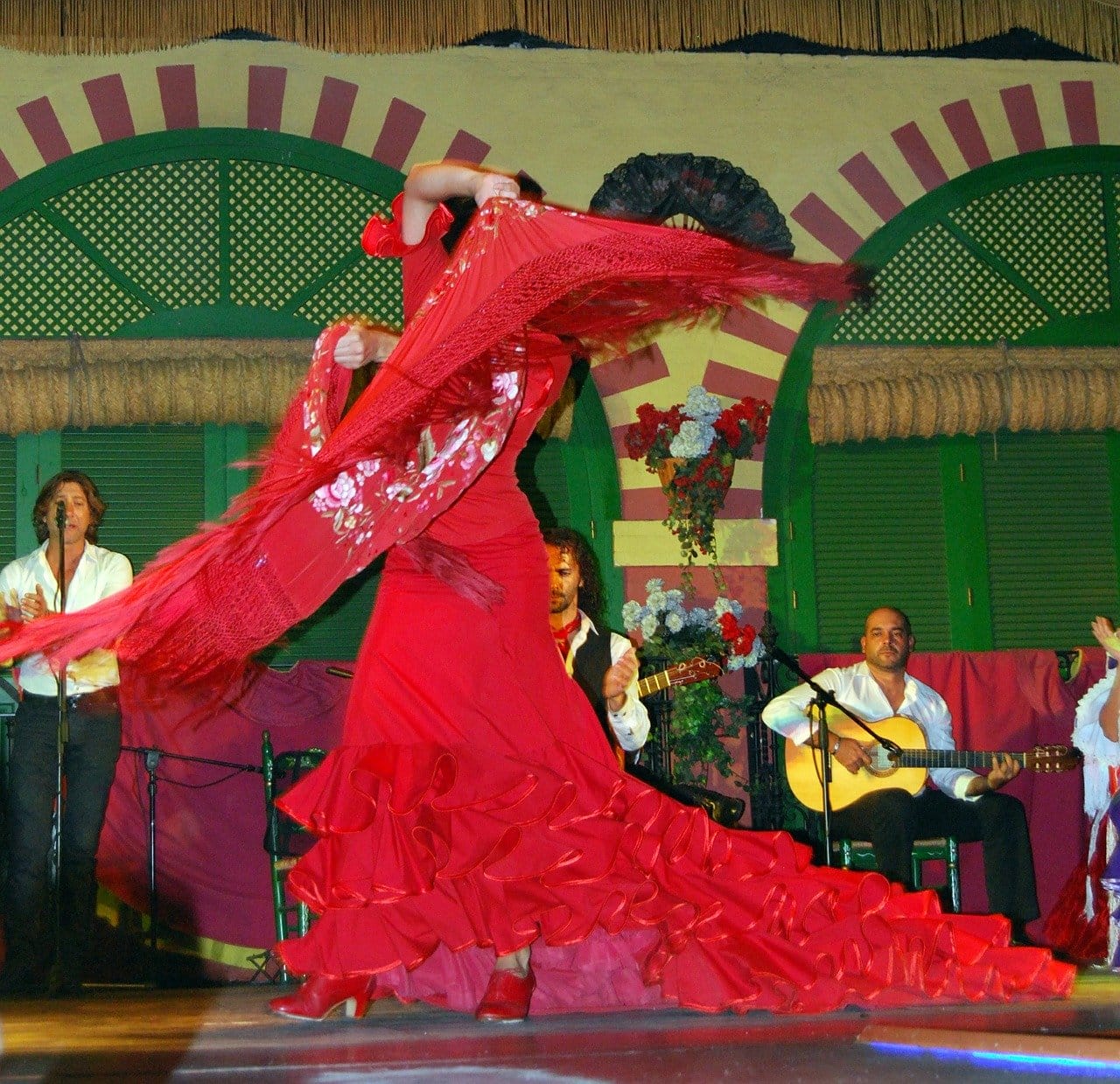
Seville is the birthplace of flamenco, so it’s only expected that watching a flamenco show is one of the most remarkable things to do in this city. While there are many tablaos (local flamenco venues) around town that offer spectacular shows, the Flamenco Dance Museum (Museo del Baile Flamenco) is the perfect place to enjoy this performance if you also want to learn more about the history of this traditional folk art.
Located at the heart of the city’s historic center (just a 5-minute walk from the cathedral), the Flamenco Dance Museum is one of the highlights of a perfect 3-day Seville itinerary if you want to truly immerse yourself in local art and culture. The museum is filled with engaging interactive exhibitions that take you through the origins of flamenco and how it evolved with time. It also showcases the different influences and cultures that have helped shape its style. You’ll also get to see an incredible collection of costumes and memorabilia from the past. There are also lots of temporary exhibitions that showcase flamenco’s influence on paintings and sculptures done by artists all around the world.
After learning about the history of flamenco, you’ll get to enjoy a fantastic live performance at the museum that is very similar to what you would see at a regular tablao. If you want to make your visit even more special, you can even take a flamenco class at the museum! Perfect for beginners, these classes are taught by professionals in the industry. So while an evening at a tablao is a great idea, the Flamenco Dance Museum is a great alternative if you want to experience flamenco through more than just a live show.
Get more information about the Flamenco Museum here.
Museum of Popular Arts and Traditions
Recommended by Dhara from It’s Not About the Miles
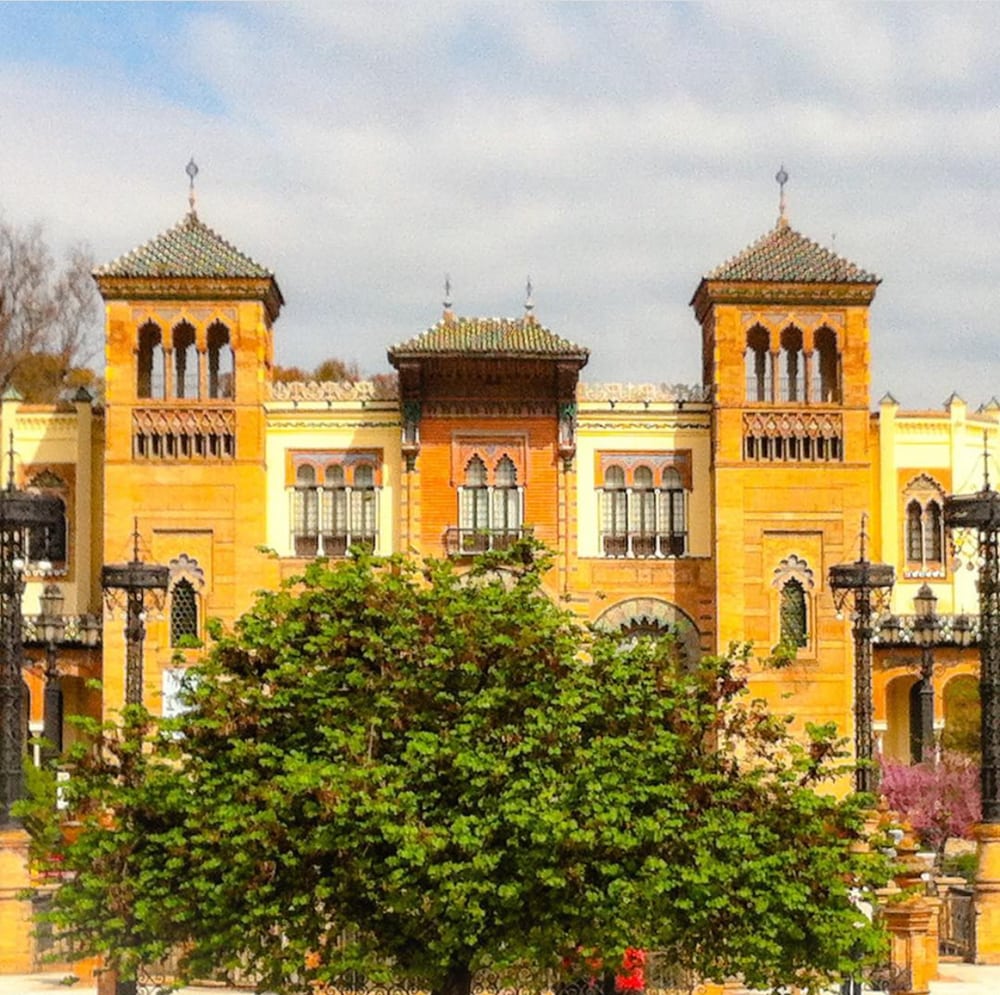
Seville has a plethora of interesting museums you can visit, among them the Museum of Popular Arts and Traditions. Located on the periphery of the Maria Luisa Park, about a 20-minute walk from the Seville Cathedral, the museum is housed in a beautiful building. The Mudéjar Pavilion, with its gorgeous facade that reflects in the water feature in front, was built in 1914.
The collections in the Museum of Popular Arts and Traditions are a part of the Seville Museum of Fine Arts. The centerpiece of the collection is the Díaz Velázquez exhibit of embroidery and lace, one of the most extensive in Europe. You can admire the exquisite craftsmanship and the intricate detail in the pieces.
Other exhibits range from traditional attire and old tools to metal work and ceramics, finely crafted furniture pieces, and musical instruments. The ceramics collection is beautiful, with fine azulejos donated by the Archaeological Museum of Seville, among others.
EU members can visit the museum for free, while the admission charge for other adults is only 1.50 euros. Allow about one to two hours to see the museum. Get more information here.
Archeological Museum
Recommended by Reshma from the Solo Globetrotter
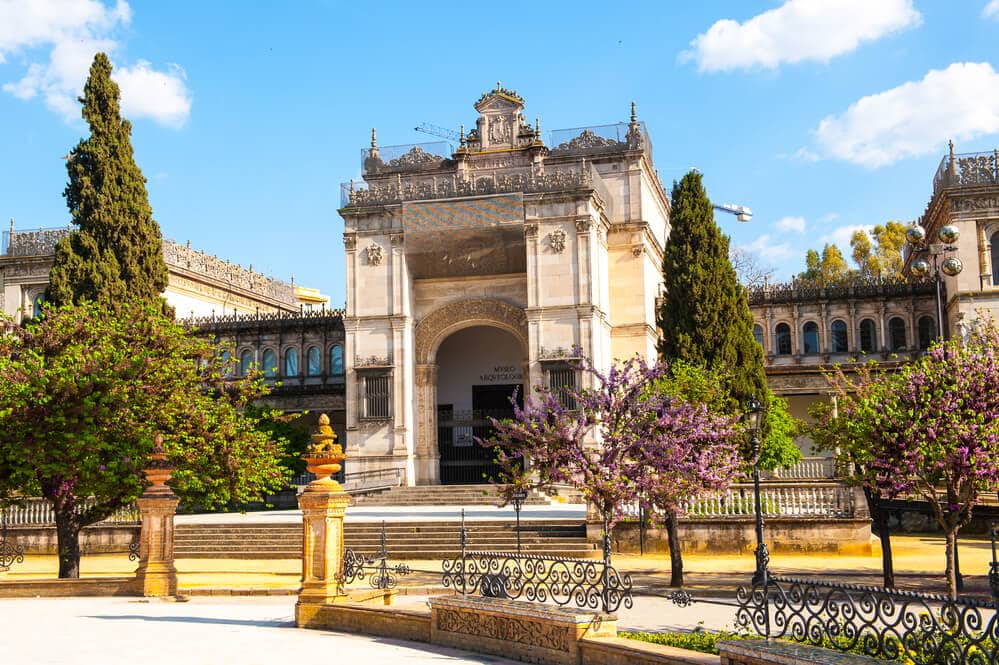
The Archeological Museum of Seville, located at Pabellón del Renacimiento – a Pavillion at the Plaza de España, is one of the famous attractions to visit while in Seville. Your Spain itinerary is not complete without experiencing the grandeur of the Moorish empire – whether it is in architecture or history of the conquests.
The building was designed by the famous Spanish architect Aníbal González. The Archeological Museum gives an insight into the treasury of these Moorish kings, which is housed in the El Carambolo treasury in the basement.
The museum has extensive collections of exquisite jewelry, many dating to the Roman empire that existed before the Moorish dynasty until the later periods after the conquest of Seville by Spanish rulers. You can find rare statues from the Roman, Islamic, and renaissance periods, demonstrating the dominance of various religions. Some of the most notable antique items are gold armor, heavy bracelets and necklaces dotted with precious gems.
The Archeological Museum of Seville is located in Plaza America, accessible by the metro. The museum is free to enter if you are an EU citizen.
Get more information about the Archeological Museum here.
Metropol Parasol Antiquarium
Recommended by Anca from Dream Book and Travel
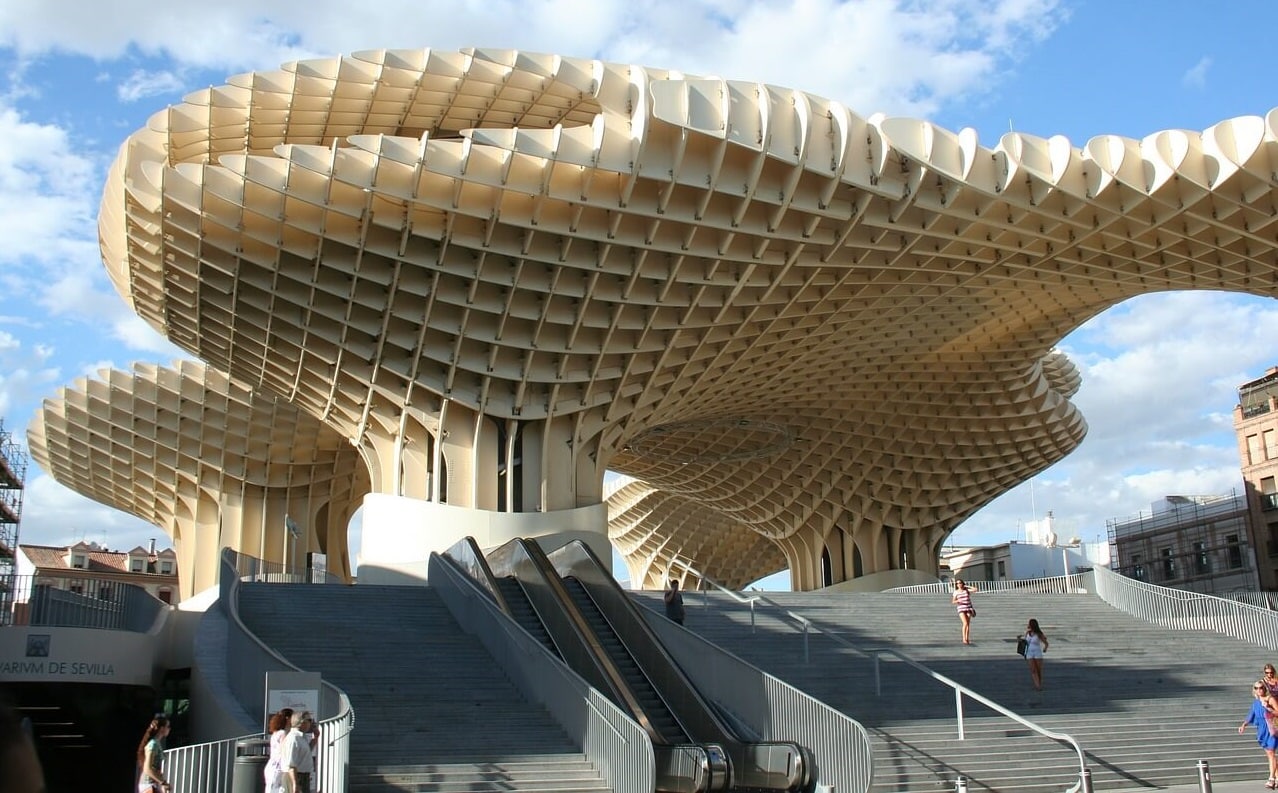
Known as Seville’s mushrooms, the Setas de Seville is a modern architectural project that resulted in the largest wooden structure in the world. The town of Seville, a focal point of any Andalusia road trip, is mostly known as the home of flamenco, bullfighting, and tapas. However, visitors should take enough time to explore this stunning project originally designed as a sunshade that comprises five levels – the Archaeological Museum, the local market, an elevated plaza, an event area, and the Mirador at a height of 28.5 meters.
While most visitors prefer to take in the city views from atop the structure, for locals this is a great venue for entertainment and cultural events. Opening hours are daily from 10:00-23:00 and an access ticket to the observatory costs 3 euros for non-residents.
The Antiquarium Museum in the basement highlights the remains of ancient Roman and Moorish structures discovered by accident during construction works for the Metropol Parasol. Opening hours for the archeological tour are Tuesday to Saturday from 10:00-20:00 and Sundays from 10:00-14:00 and the entry price is of 2 euros for non-residents.
Best Museums in other parts of Spain
Madrid, Barcelona, and Seville are not the only places in Spain with top-notch museums. There are other smaller cities with some unique museums. Several leading Spanish artists have dedicated museums in their hometowns.
Guggenheim in Bilbao
Recommended by Anisa
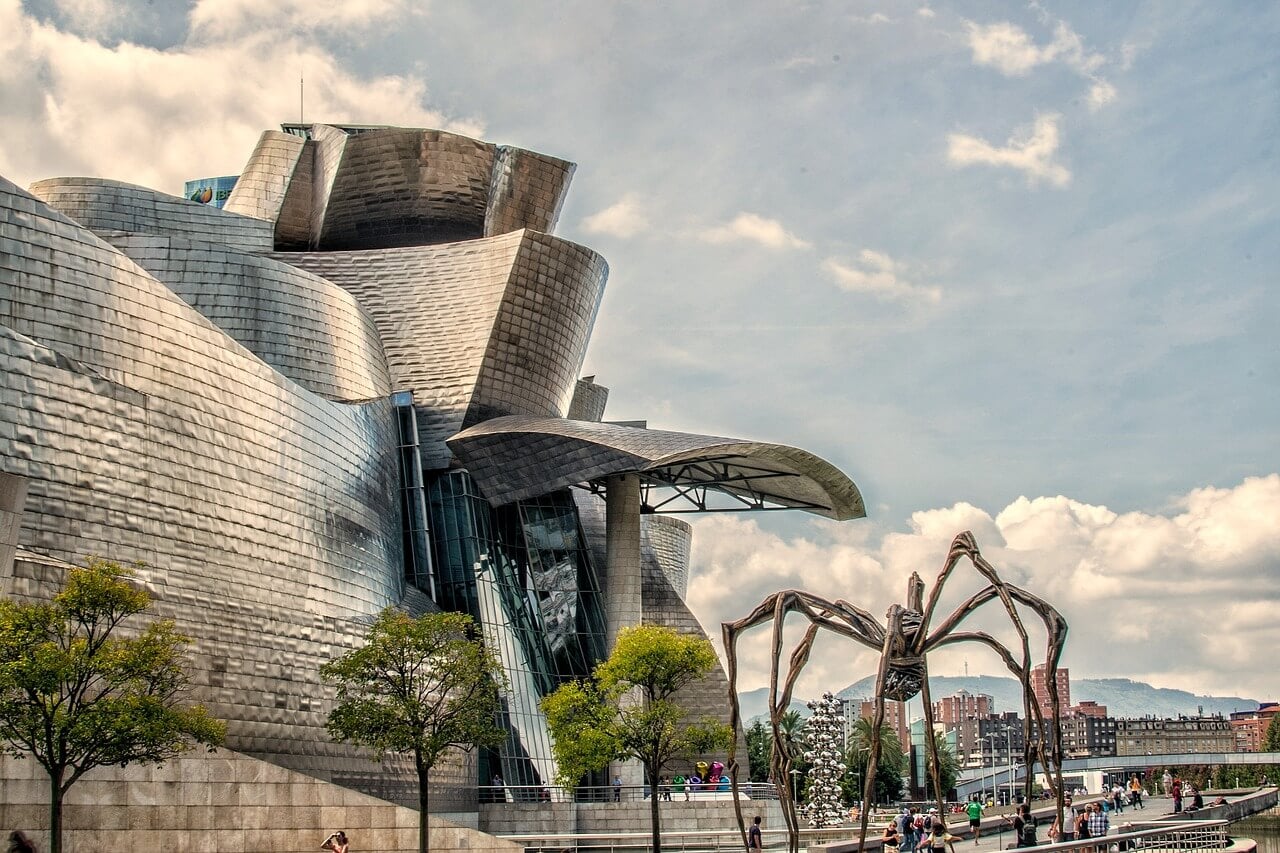
This Guggenheim Museum has only been open since 1997 and focuses on modern and contemporary art. The striking building next to the Nervion River in Bilbao was designed by Frank Gehry. The curves on the exterior were designed to catch the light. There are several imposing sculptures around the building including a spider, tulips, and a puppy.
The inside is structured around the large atrium. The galleries feature mostly large scale contemporary art and many change frequently. When we were there one of the rooms featured work by Andy Warhol.
My favorite part of the museum was the Richard Serra exhibit. I first discovered his work at DIA Beacon. At the Guggenheim, there are several large scale pieces that you can walk through to experience, then go to the next level to view from above.
The Bilbao Guggenheim is open Tuesdays through Sundays from 11:00 a.m. to 7:00 p.m. They are also open on Mondays in June, July, August, September 7 and 14, and Monday holidays.
You will get a little discount on admission by booking online here. The admission price includes an audio tour which you should download to your phone.
If you are tight on time, check out this guided tour with skip-the-line tickets.
Museo del Greco in Toledo
Recommended by Chrysoula from Athens and Beyond
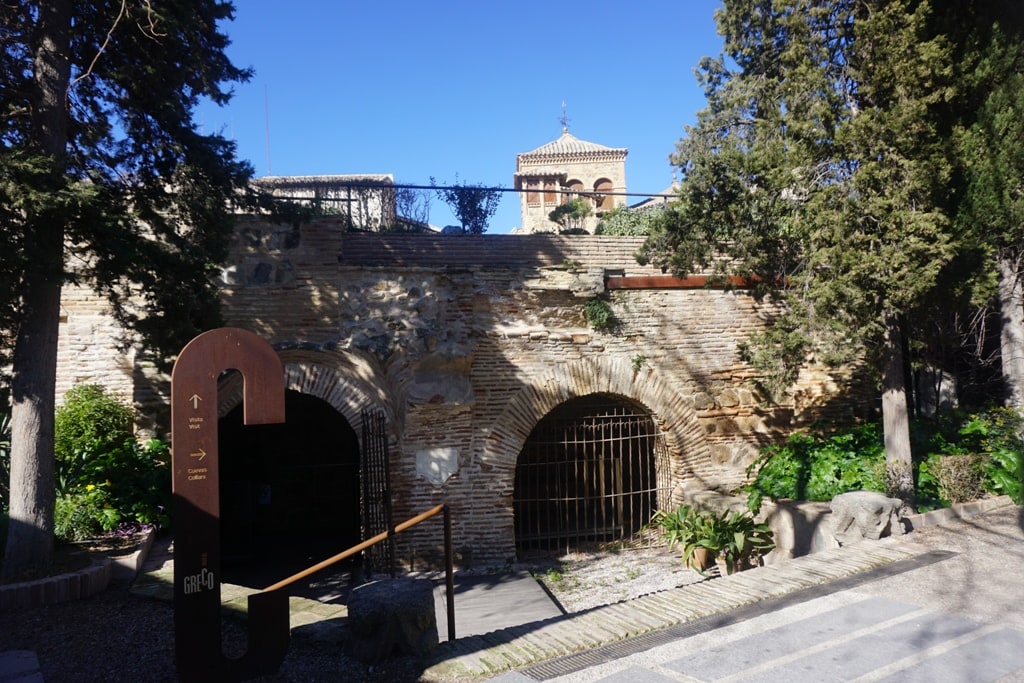
The Museo del Greco in Toledo, as the name suggests, is a museum dedicated to the life and works of artist Doménikos Theotokópoulos, more commonly known as simply El Greco. A Greek Mannerist painter and sculptor, El Greco lived and worked in Toledo for the latter part of his career, producing some of his best-known paintings while residing in Spain.
The El Greco Museum, housed across a 16th-century home and a more modern 20th-century building first opened in 1911, almost 300 years after the artist’s death. It contains a number of works by El Greco and other 17th-century Spanish painters. Additionally, you can see furniture and objects that faithfully represent El Greco’s Toledo residence and pottery from Talavera de la Reina.
Some of El Greco’s most famous works include Portal, Azulejos, the View and Plan of Toledo, and the Coronation of Thorns and Expletives which can all be seen in the El Greco Museum.
The museum is located in the Jewish Quarter in the southwest of Toledo, just off the Paseo del Tránsito. Admission is free for students, large families, and those in retirement and is also open free of charge to all Saturdays from 2 pm and Sundays. Please also note that the El Greco Museum is closed on Mondays.
Get more information about the El Greco Museum here.
Centre Pompidou in Malaga
Recommended by Joanna from The World in My Pocket
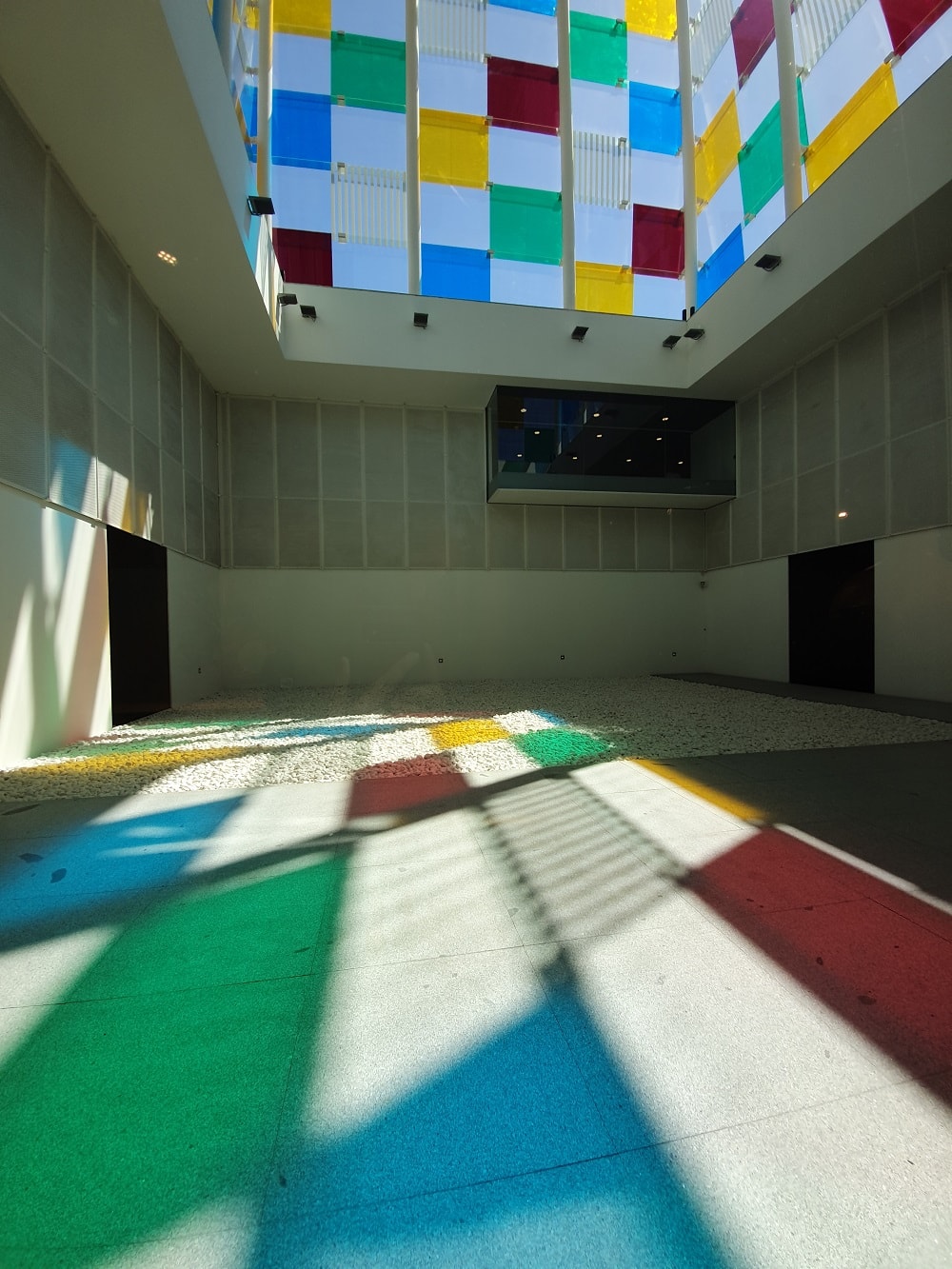
Centre Pompidou is one of Malaga’s special museums, quite unique in the world as well because it is the only international branch of the Parisian famous art centre. Located on Malaga’s promenade, Centre Pompidou is a small contemporary art gallery with both permanent and temporary collections. Whilst the temporary exhibitions don’t change that often, they are always exceptional.
Some of the prominent names that the museum has focused on during the past years include Gustav Klimt, Henry Matisse, Frida Kahlo or Alexandre Calder. Of course, works of Malaga’s most famous artist, Pablo Picasso, have a space in the permanent exhibition as well.
The museum doesn’t focus only on one particular form of art, with plenty of space dedicated to sculpture, audio-video, interactive installations, dance, live performances, as well as painting. Centre Pompidou also focuses on Spanish modern art, supporting young artists through workshops and events.
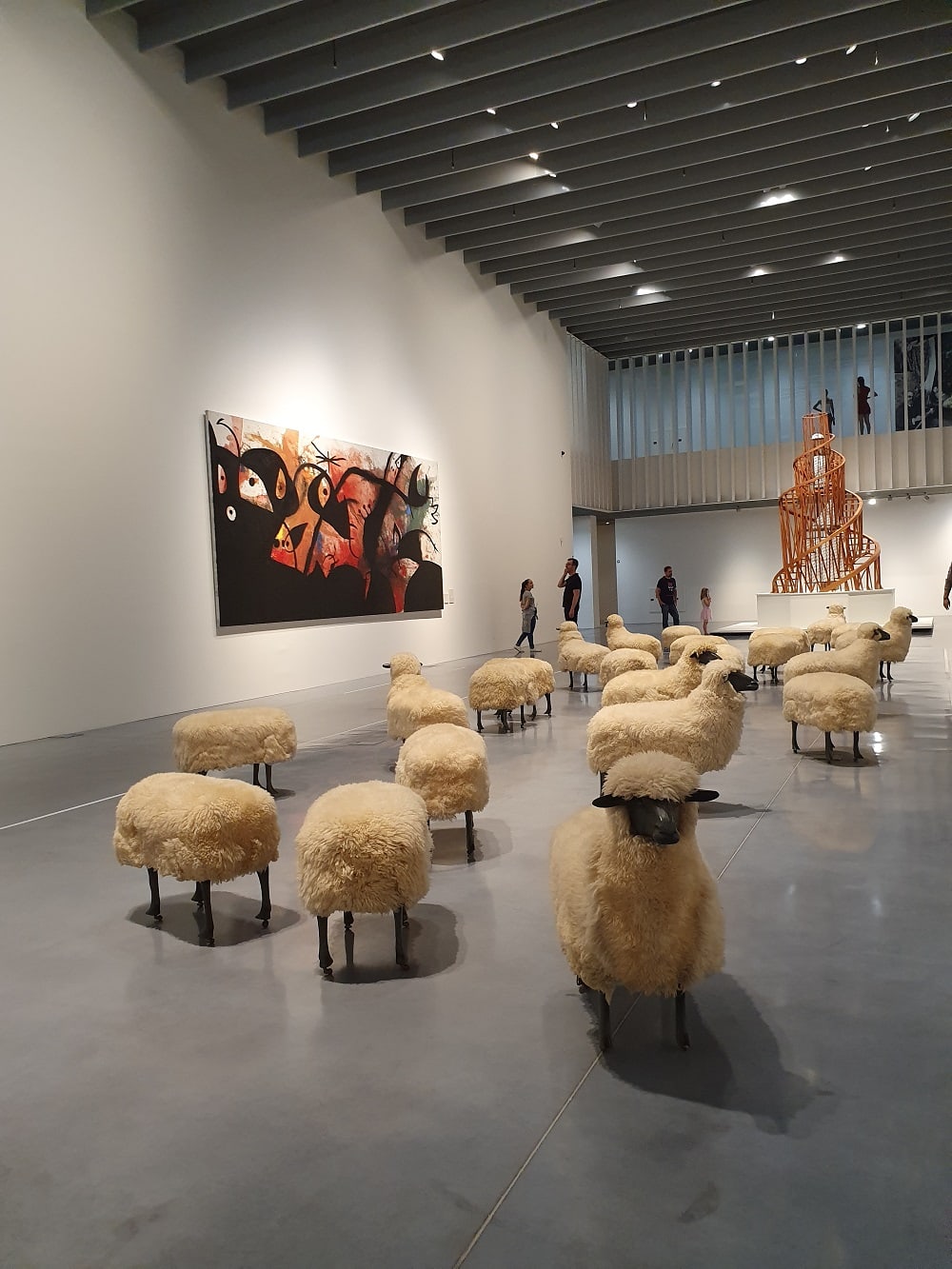
A combined ticket to visit Centre Pompidou costs 9.5 euros and includes an audio guide. On Sundays after 4:00 PM, the entrance to the museum is free. It takes around one hour to visit Centre Pompidou. Even if you are spending only one weekend in Malaga, it is recommended to visit Centre Pompidou, for an alternative enriched experience in the city.
Get more information about the Centre Pompidou here.
Picasso Museum in Malaga
Recommended by Shobha from Just Go Places
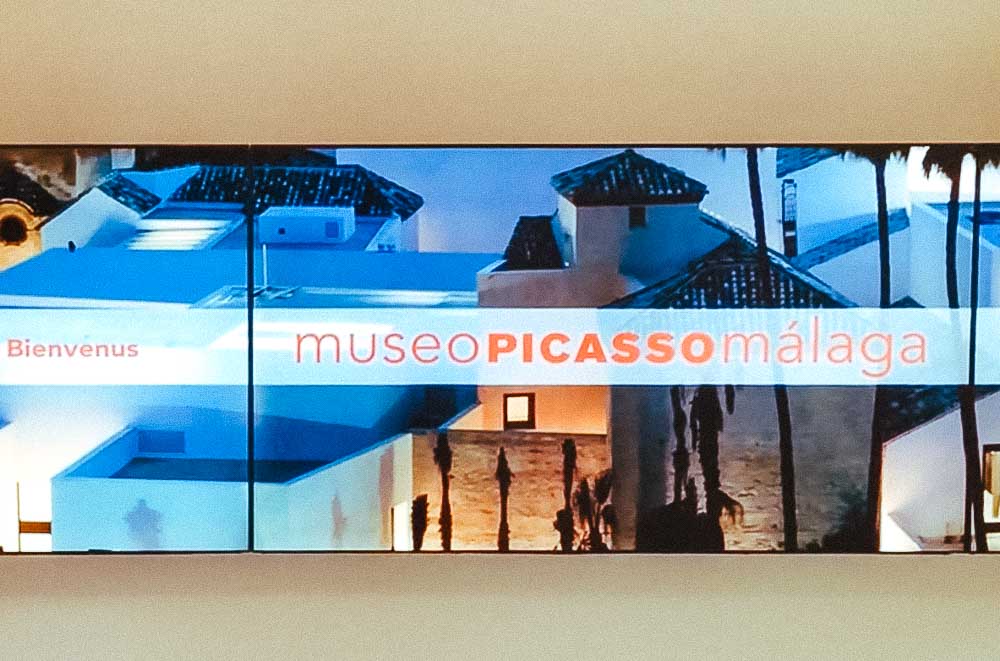
Pablo Picasso was born in Malaga so it’s only fitting this hometown hero was honored by his city. Casa Natal on the corner of Plaza del Merced is Picasso’s actual birthplace and has been turned into a museum about his life but only has a few pieces of art though.
There’s a much larger collection at the Picasso Museum in Malaga which is dedicated to his works. The museum holds about 400 pieces of Picasso’s work including paintings, sculptures, and drawings covering 80 years of his work. For example, there are several pieces about Cubism and his perspective on the human body transforming it into geometric shapes. Cubism is most associated with the work of Picasso because along with Georges Braque, he is credited with inventing this style.
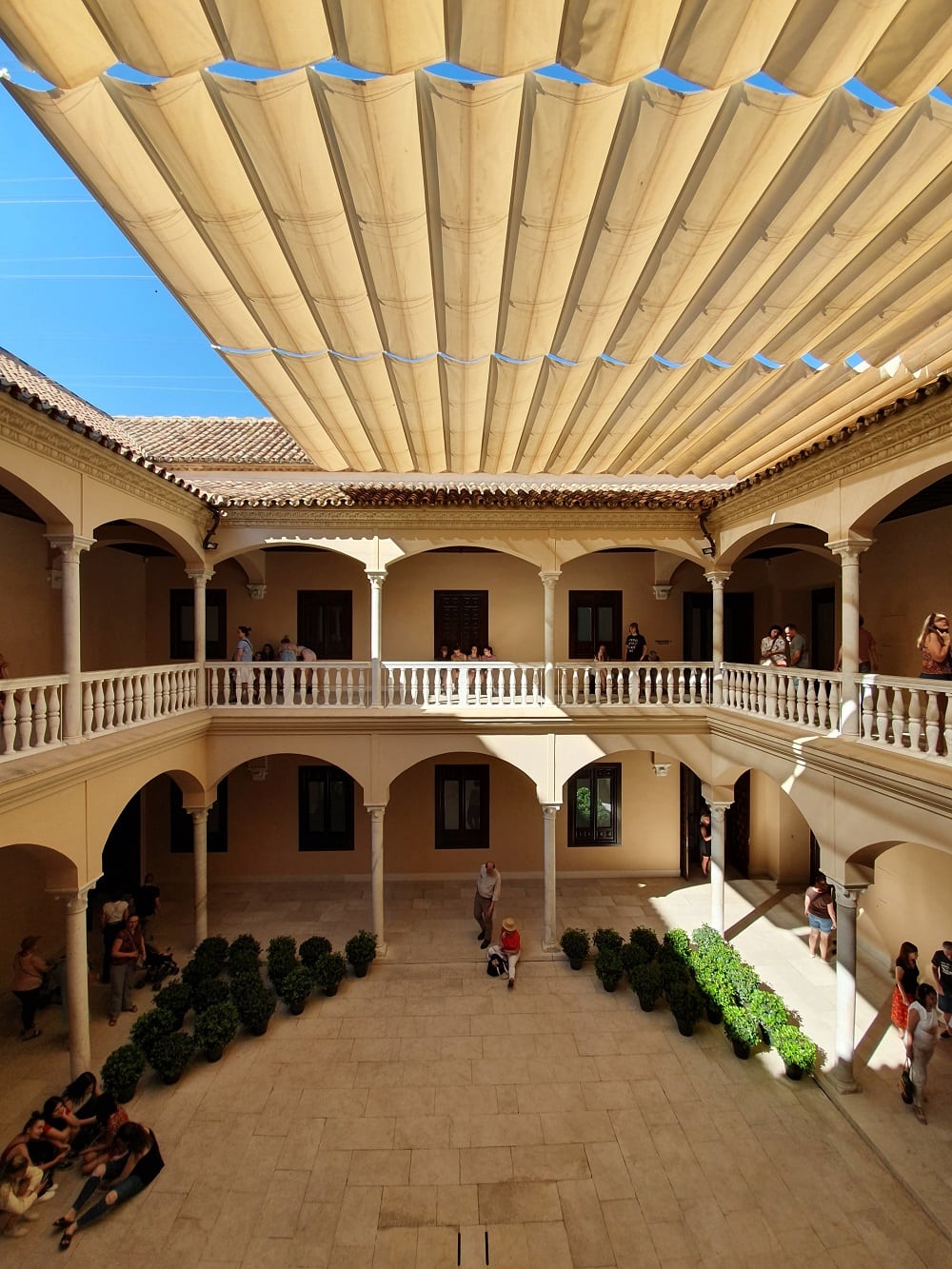
The Picasso Museum is located close to Plaza del Merced in the historic center as well. The museum is open every day and certain specified days there is free admission. For example, every Sunday there is free admission during the last two hours the museum is open. Three other days that the museum is free entry is Andalucia Day (February 28), International Museum Day (May 18) and World Tourism Day (September 27).
The Picasso museum is small enough to enjoy without being overwhelming. You get a good overview of the evolution of Picasso’s art style. We visited Malaga as a family, and my children really enjoyed the fact that you are given a handset that explains the works to you as you walk through the gallery.
Get more information about the Picasso Museum in Malaga here.
Dali Museum in Figueres
Recommended by Jyoti from Story at Every Corner
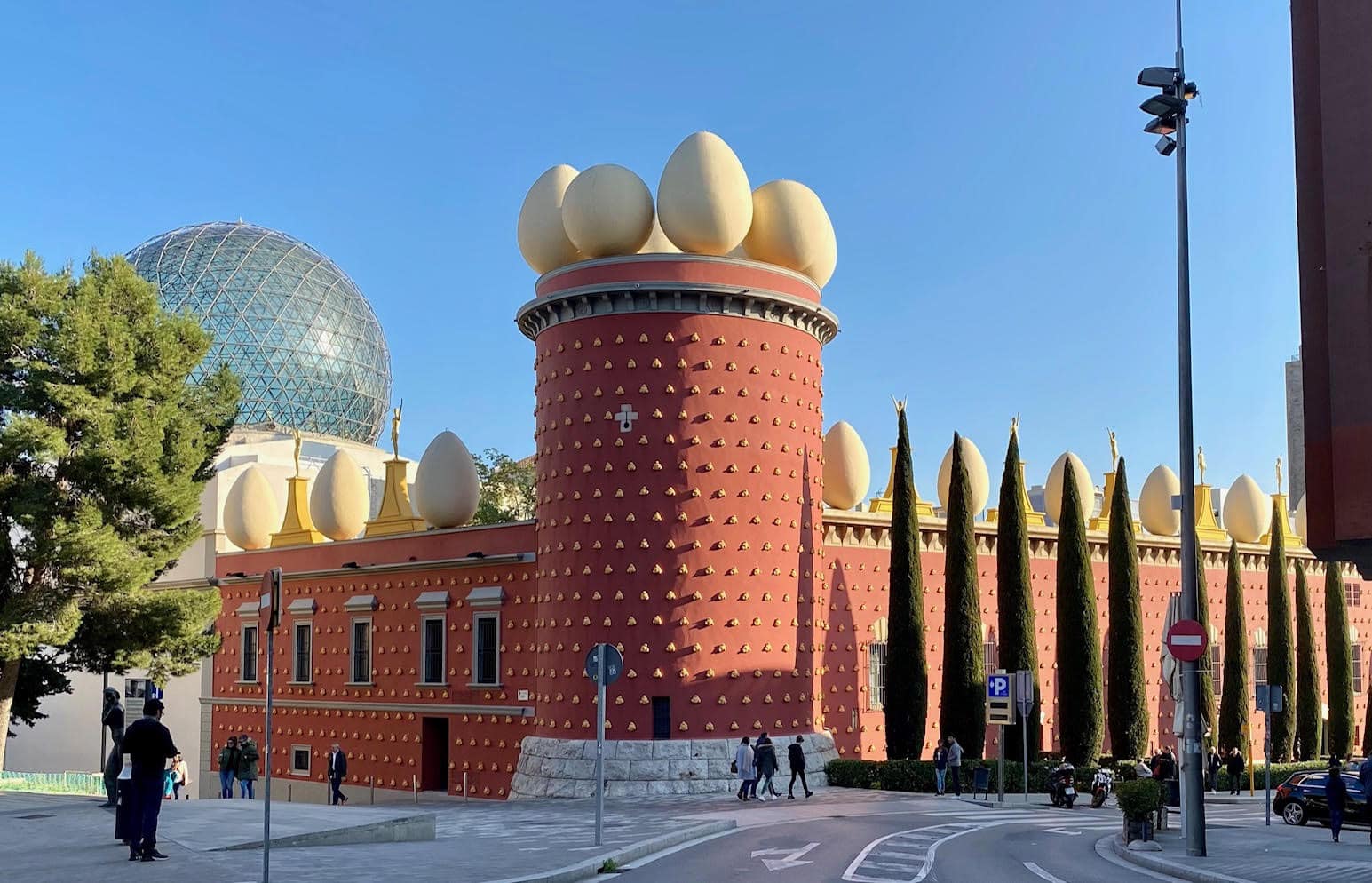
Dali museum has the finest collection of Salvador Dali’s work in the world, much from his personal collection. Dali was a Spanish surrealist artist. He was a painter, sculptor, jewelry designer, draftsman, and more. As you walk about the museum, you’ll see his work is bizarre but striking.
Right beyond the entrance of the museum is the large hall where the centerpiece is the Rainy Taxi, a black Cadillac, one of the six cars made. People would look for taxis in Barcelona when it was raining. Dali came up with the idea of rain inside a taxi when it was not raining outside. The inside of the rainy taxi is a great example of his bizarre thinking. It has a woman wax sculpture dressed in an evening gown with snails crawling all over and a taxi driver with a shark head. It’s raining inside the taxi with a network of pipes.
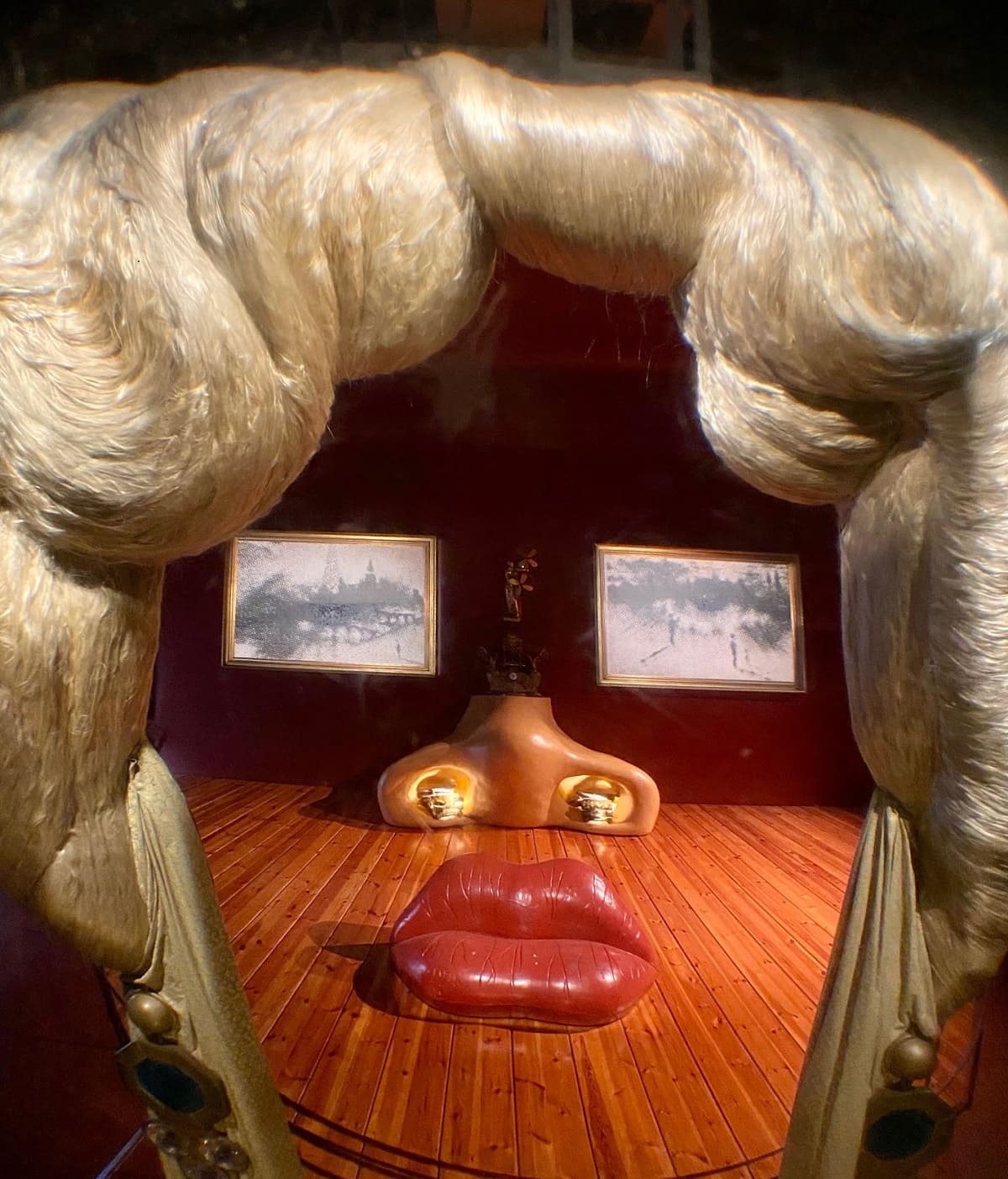
The museum has many collections within it, several by Dali himself but also some by his favorite artists and friends. There is also a portrait collection of Dali, by a famous photographer of the times. Some memorable collections include his rock sculptures, jewelry designs, 3-D faces from furniture, miniature paintings, and mechanical devices. Besides these exhibits, the museum is home to some huge paintings and installations like the Lincoln picture that reveals itself on camera.
Each of the collections and individual pieces are striking and unforgettable. They definitely leave a lasting impression.
The museum is located in the town of Figueres, Dali’s hometown, about 86 miles northeast of Barcelona. It’s an easy hour and a half drive by car. One may also travel by train.
Get more information about the Dali Museum here.
Museu Fundación Juan March in Palma de Mallorca
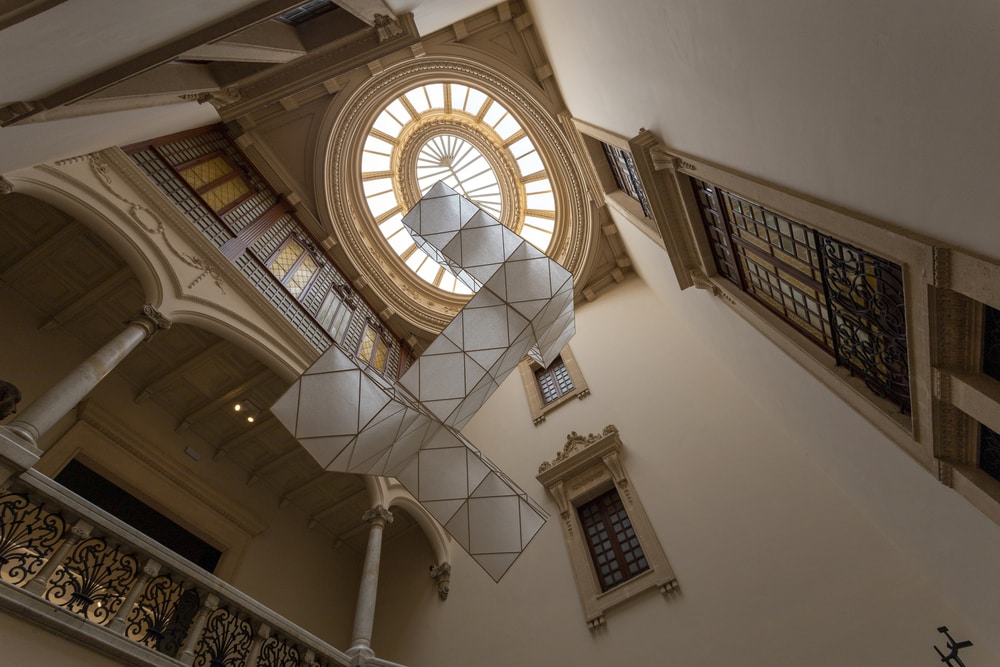
Recommended by Esther de Beer from Mooistestedentrips.nl
Barcelona lovers will be absolutely smitten with Palma de Mallorca. Joan Miró lived on the island and Gaudí spent ten years there working his magic on the cities’ cathedral. Palma de Mallorca is as much of a modernist haven as Barcelona. Wandering the streets of Palma de Mallorca you’ll see some amazing modernist architecture scattered amongst the medieval streets and 17th-century courtyards.
One of these dreamy courtyards is the entrance to one of Palma’s most exquisite museums: de Museum Fundación Juan March. The centuries-old mansion has been touched up with modernism details and exhibits the permanent collection of all important Spanish contemporary artists, like Miró, Picasso, Dalí and Juan Gris.
Visiting the museum is like a bit of a journey through various movements in Spanish art. The Basque sculptors Jorge Oteiza and Eduardo Chillida are two important leading artists in the museum, as they were very significant in leading the 1950’s art movement. Jorge Oteiza uses geometry to express the volume of the void, while Eduardo Chillida worked directly with iron and his techniques of forging it represent man’s ability to transform nature into art.
It is free to visit the Museu Fundación Juan March in Palma. Get more information about the museum here.
Valencia Silk Museum
Recommended by Tiffany from A Girl and Her Passport
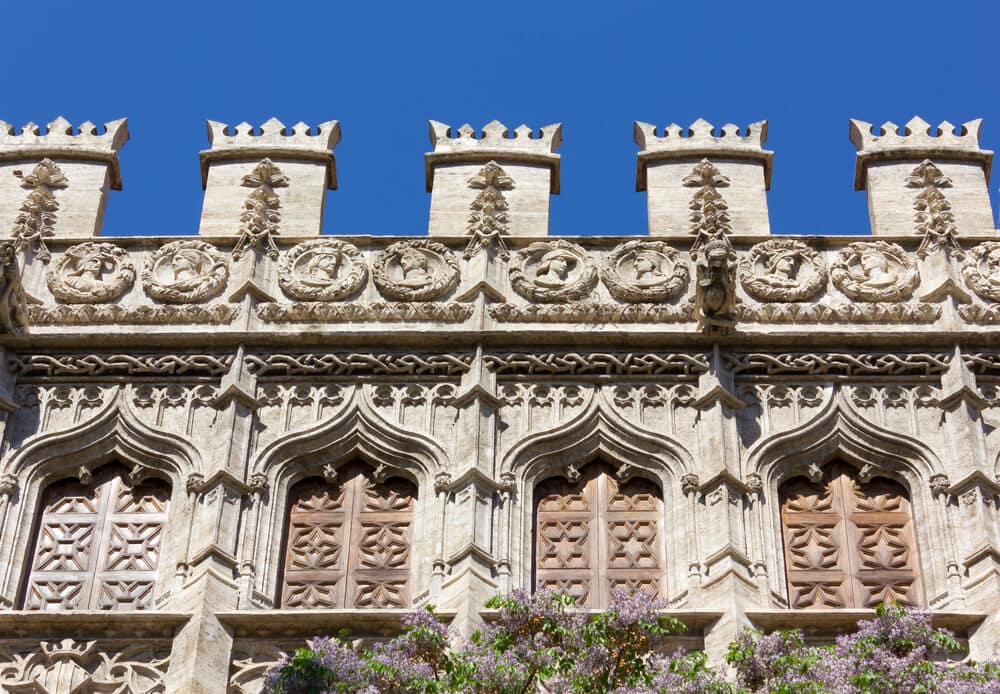
When someone you meet in your hotel raves about the Valenica Silk Museum that is just up the street from you, you go! The museum is located in the former College of High Silk Art building in Valencia. Even if you are not interested in the history of silk in Spain, the building is stunning and offers a great glimpse into Spanish architecture.
The Valencia Silk Museum covers the history of silk making and the silk trade in Spain. The exhibition space is built in a way that it takes you from how silk is spun to the weaving of silk. It also talks a bit about how silk as been used over the years in Spain and around the world.
Be sure to check out the floors of the museum as they are elaborate tiles and are stunning on their own. There is a beautiful courtyard on the ground floor with a cafe to enjoy the Spanish sunshine. There is a workshop area that can be toured but you have to be on a guided tour to see it. Be sure to ask about it if you want to make arrangements.
Get more information about the Silk Museum here.
Sacromonte Cave Museum in Granada
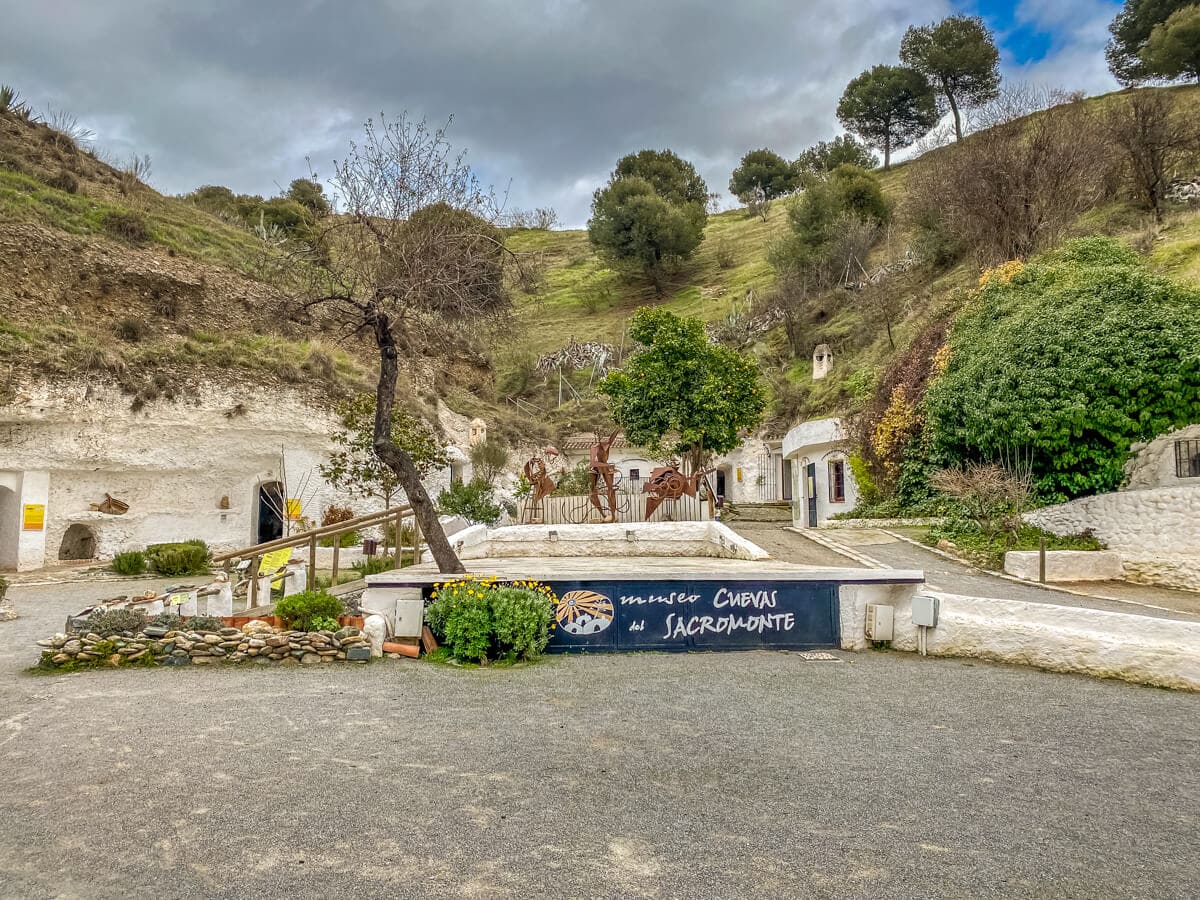
Sacromonte is a traditional hillside neighborhood on the eastern side of Granada where some of the Romani who settled in Granada lived in caved houses. If you want to learn more about this unique area you need to visit the Sacromonte Caves Museum.
Here you can go inside recreated caves and learn about the cave-dwelling lifestyle and culture. You will see what the homes would have looked like and set foot in caves set up as stables and workshops for forging, basketwork, ceramics, and weaving.
One of the caves is specifically dedicated to flamenco where you can discover how Sacromonte influenced the cultural dance. You can also watch a video of a flamenco performance.
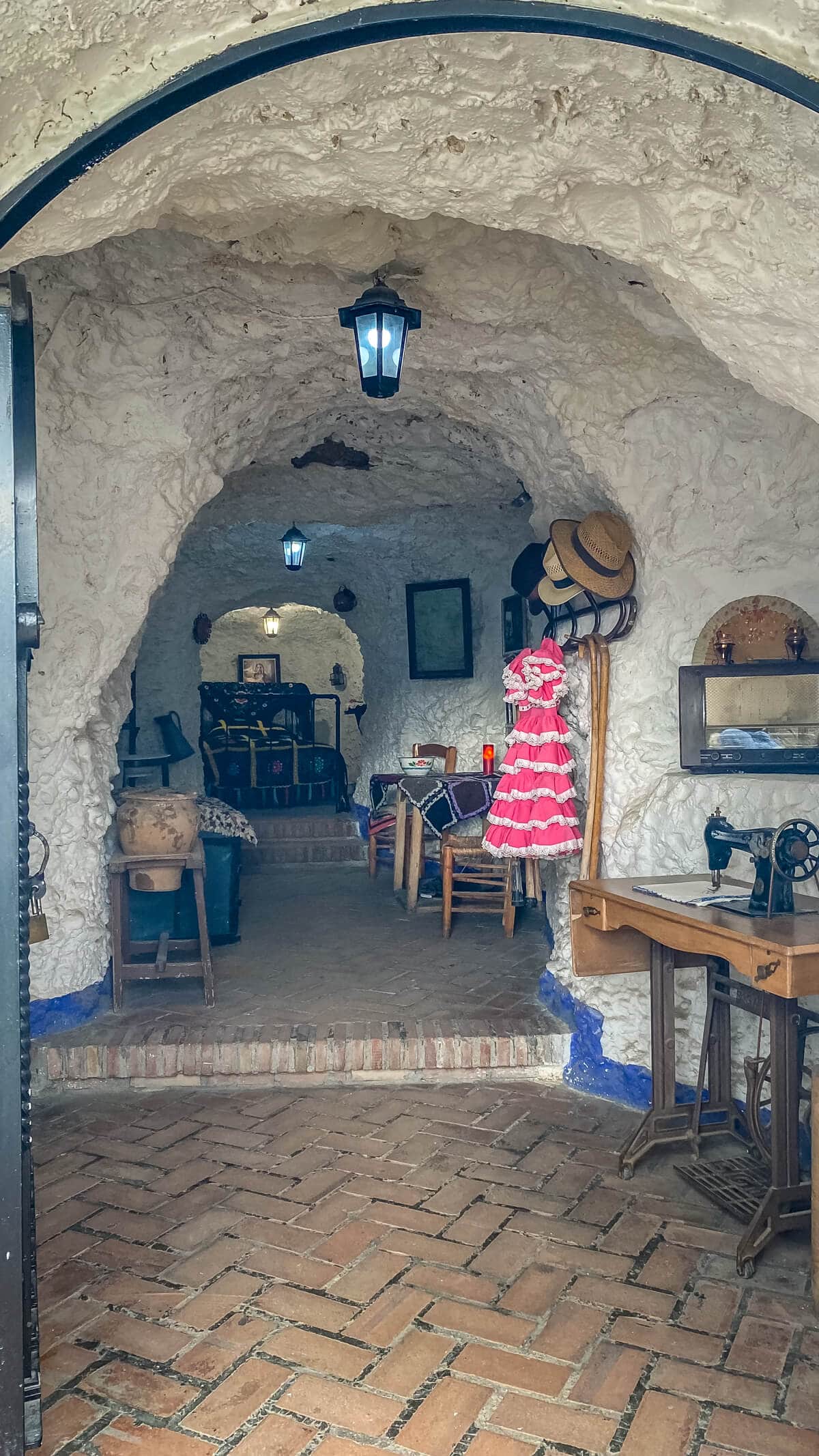
The Sacromonte Museum is a good place to learn about the wildlife and nature in the area as well. The agriculture, plants, and climate played a big role in the way people lived and worked in these caves.
The museum offers a free audio guide through the izi.travel app and they have information boards in both English and Spanish. Additionally, make sure you check out the viewpoint where you can look out over the valley and see the Alhambra.
Admission to this museum is €5. While you don’t have to book in advance, you may be able to save a little money by booking a combination ticket for the Sacromonte Museum and Sacromonte Abbey online here.
Note: You will need to climb a fair number of steps from the road to get to the entrance of the Sacromonte Museum.
The Best Museums in Spain
As you can see, there are plenty of amazing museums to satisfy culture lovers! The difficult part is figuring out how to fit as many as possible into your trip.
What have been your favorite museums in Spain?
Be sure to grab my travel checklist when you are ready to start planning your trip.
-Anisa
Pin for Later
Expert Tips for Visiting the Best Museums in Spain
- Where possible, take advantage of the free hours to see some of the most popular museums.
- In many cases, it is best to book your museum tickets online to avoid lines when you visit.
- Barcelona and Madrid have attraction passes which may save you money if you plan on going to several museums and other tourist attractions.
Disclosure: This post contains affiliate links. This means we will receive a small commission for some purchases made using links in our blog with no additional cost to you. Please be assured we would not promote any product unless we believe that our readers will also benefit. The commission does not influence the editorial content of this site.
Two Traveling Texans is a participant in the Amazon Services LLC Associates Program, an affiliate advertising program designed to provide a means for sites to earn advertising fees by advertising and linking to amazon.com, amazon.co.uk, amazon.ca. Amazon and the Amazon logo are trademarks of Amazon.com, Inc. or its affiliates.

